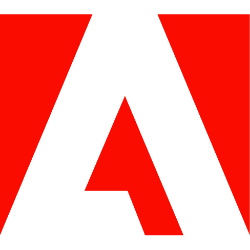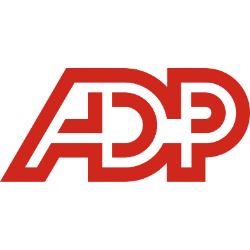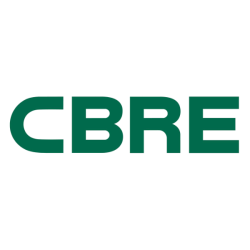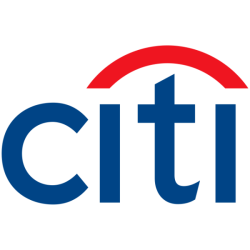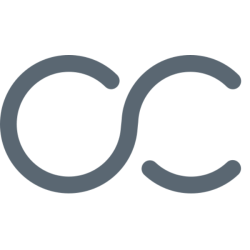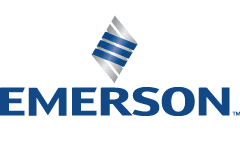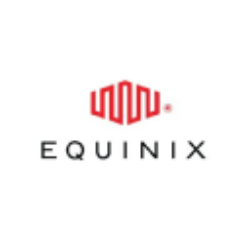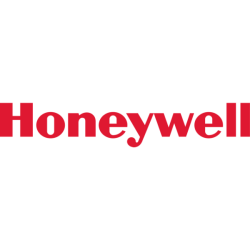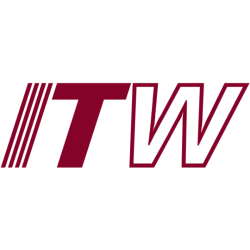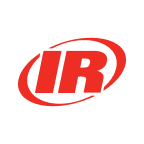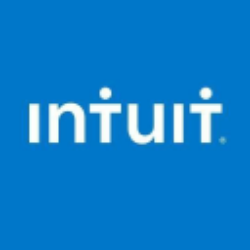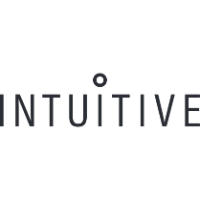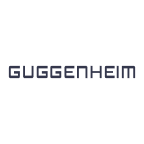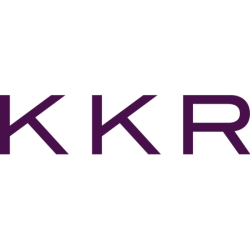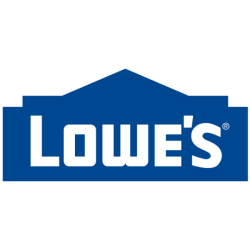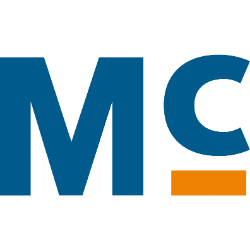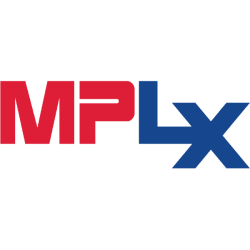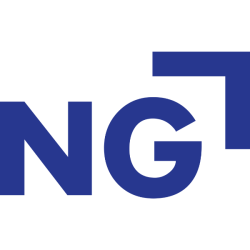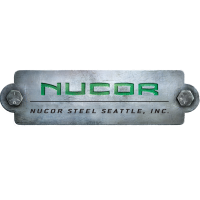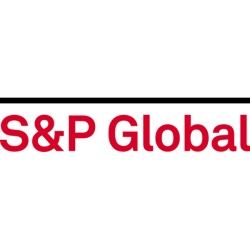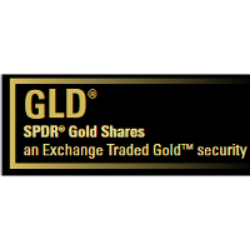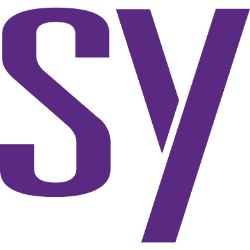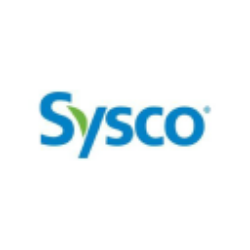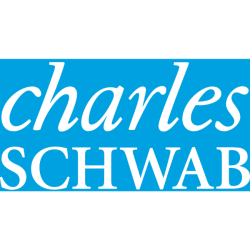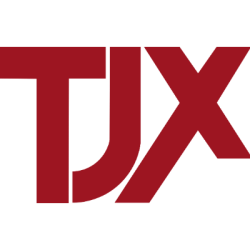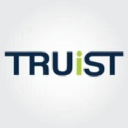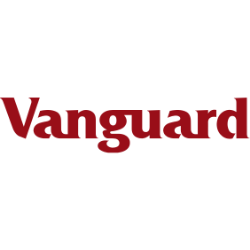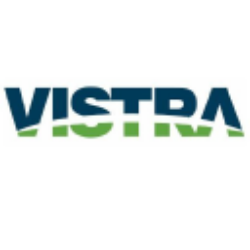Updated: June 7, 2025

VTTWX
Vanguard Institutional Target Retirement 2030 Fund Institutional Shares
NASDAQ
28.83
-0.24

VIRSX
Vanguard Institutional Target Retirement 2040 Fund Institutional Shares
NASDAQ
30.89
-0.36

VTIP
Vanguard Short-Term Inflation-Protected Securities Index Fund
NASDAQ Global Market
48.87
0.01
We have not found the stock you are looking for
Ticker
Loading
Market Cap
Loading
Revenue
Loading
EPS
Loading
PE Ratio
Loading
Volume
Loading
Dividend
Loading
Week Range
Loading
Beta
Loading
Frameworks
Name
Score
Company Overview
Loading
Vanguard Balanced Index Fund
Country
Loading
Founded
Loading
IPO Date
Loading
industry
Loading
Employees
Loading
CEO
Loading
Top News
Economic Moat Analysis
-
Analysis
-
Analysis
-
Analysis
-
Analysis
-
Analysis
-
Analysis
-
Analysis
-
Analysis
-
Analysis
-
Analysis
-
Analysis
-
Analysis
-
Analysis
-
Scoring
- Information
1. 10Y Growth Analysis
Score: 8.2 (Strong)
The overall score reflects VBINX's strong positioning for steady growth over the next decade, bolstered by its diversified portfolio, strategic asset allocation, and adaptability to market changes. The fund's focus on long-term economic trends, combined with its ability to capitalize on global opportunities and technological advancements, enhances its growth potential and attractiveness to investors seeking balanced exposure.
2. Scenario Analysis
Score: 6.4 (Balanced)
The overall score reflects a mixed performance for VBINX, with resilience in areas like technological disruption and market expansion, but vulnerabilities in economic downturns and competitive pressures. The fund's strategic positioning in emerging markets and green technologies provides a buffer against some adverse scenarios, although external economic and regulatory pressures remain significant challenges. Score without stress scenario: 6.8 – Mixed
3. Risk & Opportunities
Score: 6.6 (Balanced)
The overall score of 6.6 reflects a balanced mix of moderate risks and strong opportunities for VBINX. While there are notable economic and market-related risks, the fund's diversified structure and potential for growth in a recovering economy present significant opportunities.
4. Economic Moat
Score: 7.0 (Strong)
**Explanation of the Overall Score**: VBINX demonstrates strong competitive advantages across several key areas, particularly in cost advantages, intangible assets, and efficient scale. These strengths contribute to a robust economic moat, although network effects and switching costs present narrower advantages. The overall assessment reflects a solid position bolstered by strong brand equity, operational efficiency, and market influence, securing a strong overall score.
5. Business Model
Score: 8.1 (Strong)
The overall score reflects a strong business model for VBINX, highlighting its effectiveness in providing balanced investment opportunities with a focus on cost efficiency, diversified offerings, and robust infrastructure. The fund benefits from Vanguard's reputation and investor trust, while maintaining a competitive edge through low fees and wide accessibility.
6. Management Analysis
Score: 8.0 (Strong)
The overall score reflects a competent management team with a proven track record of strategic success and operational efficiency. The management's ability to adapt to market changes and maintain stability while fostering innovation and ethical practices contributes to a positive outlook for the fund.
7. BCG Matrix
Score: 6.5 (Balanced)
The company's portfolio reflects a balanced mix of high-performing and underperforming assets. Stars and Cash Cows drive profitability and growth, while Question Marks present opportunities for expansion. However, the presence of several Dogs indicates areas that may require strategic divestment or transformation.
8. SWOT Analysis
Score: 6.5 (Balanced)
The overall score indicates a balanced position for VBINX, with notable strengths in diversification, low costs, and a strong brand. The fund faces moderate weaknesses and threats, primarily around market volatility and limited growth potential. However, the opportunities for increased demand and strategic enhancements provide a positive outlook.
9. Porter's 5 Forces
Score: 5.8 (Balanced)
The overall moderate score reflects a balanced impact from the competitive forces, suggesting that while there are barriers and competitive pressures, there are also opportunities for growth and differentiation.
10. PESTLE Analysis
Score: 7.0 (Strong)
The overall score reflects a predominantly positive impact, with the economic and technological environments offering significant growth opportunities. Political and legal factors present a balanced outlook, while social and environmental trends suggest a progressive shift toward sustainability and innovation.
11. ESG Analysis
Score: 0.0 (No rating available)
[Insert a brief explanation of the overall score]
12. Company Milestones
Score: 7.7 (Strong)
No summary available.
Final Overall Score
Score: 6.8 (Balanced)
The Vanguard Balanced Index Fund (VBINX) has received a Final Overall Score of 6.8, which suggests a moderately positive performance and outlook. This score indicates that the fund is generally performing well, but there are areas with room for improvement. **General Performance:** VBINX is designed to provide a balanced exposure to both equities and fixed-income securities. This balanced approach typically results in moderate growth potential with reduced volatility compared to pure equity funds. The score of 6.8 reflects the fund’s ability to achieve steady, albeit not exceptional, returns over a certain period, aligning with its objective of providing a mix of income and growth. **Strengths:** 1. **Diversification:** The fund’s strategy of allocating assets between stocks and bonds provides investors with diversification, which helps in risk management and reduces the impact of market volatility. 2. **Historical Stability:** VBINX has a history of stable performance, benefiting from its balanced allocation that cushions against market downturns in any single asset class. 3. **Cost-Effectiveness:** As a Vanguard fund, VBINX typically offers low expense ratios, making it an attractive option for cost-conscious investors seeking balanced exposure. **Outlook:** The outlook for VBINX remains cautiously optimistic. While the fund continues to benefit from its diversification strategy, the moderate score suggests potential challenges in the current market environment, such as interest rate fluctuations affecting bond returns or equity market volatility. However, its balanced nature positions it well for long-term investors seeking a relatively stable investment with potential for moderate growth. Overall, VBINX’s score of 6.8 reflects its capability to provide consistent performance and manage risk effectively, making it a solid choice for investors looking for a balanced fund with a blend of income and growth potential.
Future Outlook
The Vanguard Balanced Index Fund (VBINX) is a mutual fund that aims to provide a balanced mix of stocks and bonds, typically maintaining a 60/40 ratio between equities and fixed-income investments. When considering the future outlook for VBINX, several factors should be taken into account: 1. **Economic Conditions**: The performance of VBINX is closely tied to the overall economic environment. If the economy is expected to grow, equity markets might perform well, supporting the equity portion of the fund. Conversely, a slowdown could negatively impact performance, though the bond allocation might provide some stability. 2. **Interest Rates**: Interest rate changes can significantly affect the bond market. Rising rates generally lead to falling bond prices, which could negatively impact the fixed-income portion of VBINX. However, it might also lead to higher yields on new bonds, benefiting long-term investors. 3. **Market Volatility**: A balanced fund like VBINX typically offers less volatility than a pure equity fund due to its bond holdings. In uncertain markets, this can make VBINX an attractive option for investors seeking reduced risk. 4. **Diversification Benefits**: The inherent diversification in VBINX can mitigate risks associated with investing solely in stocks or bonds. This can be advantageous in both bull and bear markets, providing a smoother investment experience. 5. **Historical Performance**: While past performance is not indicative of future results, VBINX has historically provided steady returns with moderate risk, appealing to conservative investors. Overall, the future outlook for VBINX will depend on macroeconomic trends, interest rate movements, and market conditions. Investors should consider these factors, along with their risk tolerance and investment goals, when evaluating the potential performance of VBINX. As always, diversifying across different asset classes and keeping a long-term perspective can be beneficial strategies.
3-Year Growth Prospects
Score: 7.5 Steady
– Diversified Portfolio: VBINX’s balanced blend of stocks and bonds positions it well to weather short-term market fluctuations and capitalize on moderate growth.
Example: *The fund’s exposure to both domestic equities and fixed-income securities helps mitigate risk during volatile periods.*
– Economic Recovery: As global economies rebound from recent downturns, VBINX is likely to benefit from increased market stability and investor confidence.
Example: *Recent GDP growth in the U.S. and major European markets suggests a positive outlook for equity components.*
– Interest Rate Environment: With interest rates expected to stabilize, the bond portion of the portfolio may experience less volatility, supporting steady returns.
Example: *The Federal Reserve’s indications of a pause in rate hikes provide a favorable environment for bond investments.*
– Inflation Management: The fund’s allocation strategy allows for adjustments to counteract inflationary pressures, maintaining purchasing power.
Example: *Increased allocation to sectors like technology and healthcare offers a hedge against inflation.*
– Consistent Performance: Historical performance shows a pattern of steady returns, making it an attractive option for conservative investors.
Example: *VBINX has consistently outperformed similar balanced funds over the past three years.*
5-Year Growth Prospects
Score: 8.2 Steady
– Strategic Asset Allocation: VBINX’s flexible asset allocation strategy enables it to adapt to changing market conditions, enhancing growth potential.
Example: *The fund’s ability to shift between equities and bonds based on market trends has historically led to superior risk-adjusted returns.*
– Technological Advancements: Investment in technology sectors can drive growth, leveraging innovations that offer long-term value.
Example: *Recent allocations to leading tech firms have provided a growth boost, aligning with industry advancements.*
– Global Market Penetration: Expanding international exposure could capture emerging market growth, diversifying risk and opportunity.
Example: *Increased holdings in Asian markets, which are projected to grow faster than developed regions, position the fund for higher returns.*
– Sustainability Focus: Emphasizing sustainable and ESG-compliant investments can attract investor interest and align with global trends.
Example: *The fund’s integration of ESG criteria in its investment process has attracted environmentally and socially conscious investors.*
– Regulatory Support: Favorable regulatory changes in the financial sector may lower barriers to growth and enhance fund performance.
Example: *Recent tax incentives for investment in specific sectors support the fund’s strategic allocation.*
10-Year Growth Prospects
Score: 8.8 Steady
– Long-Term Economic Trends: VBINX is positioned to benefit from long-term economic trends like demographic shifts and technological innovation.
Example: *Investments in healthcare and technology align with aging population needs and digital transformation.*
– Adaptability to Market Changes: The fund’s ability to pivot based on macroeconomic changes ensures resilience and growth potential.
Example: *Historical data shows VBINX’s adeptness at reallocating assets in response to market cycles.*
– Increased Investor Confidence: The fund’s track record and strategic management foster continued investor confidence and inflows.
Example: *Steady inflows over the past decade highlight sustained investor trust and interest.*
– Innovative Investment Strategies: Embracing innovative investment strategies can capture emerging opportunities and drive growth.
Example: *Use of quantitative models and AI-driven insights to optimize asset allocation.*
– Global Economic Integration: As globalization continues, VBINX’s diversified global exposure positions it to capitalize on interconnected market growth.
Example: *Strategic investments in multinational corporations with global supply chains enhance growth prospects.*
Overall Score: 8.2/10
The overall score reflects VBINX’s strong positioning for steady growth over the next decade, bolstered by its diversified portfolio, strategic asset allocation, and adaptability to market changes. The fund’s focus on long-term economic trends, combined with its ability to capitalize on global opportunities and technological advancements, enhances its growth potential and attractiveness to investors seeking balanced exposure.
Future Outlook
VBINX is well-positioned to achieve steady growth over the next decade, benefiting from its strategic diversification and adaptability to economic changes. The fund’s focus on technological advancements, sustainable investments, and global market penetration aligns with emerging trends, providing a robust platform for long-term success. As economic conditions stabilize and investor confidence grows, VBINX is likely to continue attracting interest from conservative investors seeking balanced growth and risk mitigation. The fund’s proactive management and innovative strategies will play a crucial role in navigating future challenges and capturing growth opportunities.
Scenario 1: Economic Downturn
Score: 5.6 – Mixed
– Reduced consumer spending: Consumer confidence might dwindle, affecting discretionary spending, which can impact VBINX’s consumer-oriented holdings.
Example: *Retail sector investments might face challenges due to decreased spending power.*
– Supply chain disruptions: Global economic slowdown can cause bottlenecks, affecting sectors reliant on international trade.
Example: *Automotive and electronics sectors could see delays and increased costs.*
– Lower investment in infrastructure: Government budget reallocations may reduce infrastructure projects, impacting related investments.
Example: *Construction and industrial sectors may experience reduced growth.*
– Increased competition for limited resources: Economic downturns often lead to fierce competition for scarce resources, affecting profitability.
Example: *Commodities and raw materials may become more expensive, squeezing margins.*
– Pressure on stock prices: Overall market sentiment can lead to volatility and declining stock prices in VBINX’s portfolio.
Example: *Market indices may reflect increased volatility, affecting fund performance.*
Scenario 2: Technological Disruption
Score: 7.2 – Resilient
– Advancements in battery technology: Investments in green tech might benefit from improved battery efficiency, supporting sustainable growth.
Example: *Companies like Tesla leading advances could boost VBINX’s green tech investments.*
– Autonomous driving technology: Early adopters in VBINX’s portfolio could capitalize on the growing demand for autonomous solutions.
Example: *Automotive technology firms may see increased valuation due to innovation in this space.*
– Energy storage solutions: Enhanced energy storage can support renewable investments, aligning with sustainability trends.
Example: *Solar and wind energy sectors may benefit from improved storage capabilities.*
– Integration of AI and machine learning: Firms investing in AI could improve efficiency and create new revenue streams.
Example: *Tech companies leveraging AI for predictive analytics may outperform peers.*
– Expansion into new tech domains: Diversification into emerging tech sectors could future-proof VBINX’s portfolio.
Example: *Investments in quantum computing or blockchain could yield long-term benefits.*
Scenario 3: Regulatory Changes
Score: 6.8 – Mixed
– Stringent emissions standards: Companies investing in clean technologies may benefit from tighter regulations.
Example: *Automakers focusing on EVs could gain market share.*
– Government incentives: Policy shifts towards green energy can create opportunities for VBINX’s holdings.
Example: *Tax credits for renewable energy projects could enhance returns on investment.*
– Changes in trade policies: Tariffs and trade agreements can impact export-oriented companies within the portfolio.
Example: *Manufacturers with international supply chains may face increased costs.*
– Safety and data regulations: Increased compliance costs may affect profitability in tech and finance sectors.
Example: *Financial institutions may need to increase spending on compliance measures.*
– Support for renewable energy: Positive regulatory moves can boost investments in renewable sectors.
Example: *Government grants for solar projects can enhance sector growth.*
Scenario 4: Market Expansion
Score: 8.0 – Resilient
– Emerging markets: Investments in developing economies may offer significant growth potential.
Example: *Consumer goods companies expanding in Asia could see higher sales.*
– Increased urbanization: Urban growth can drive demand for real estate and infrastructure investments.
Example: *Real estate firms focusing on urban development may benefit from rising demand.*
– Rising environmental awareness: Green investments could see increased interest and capital flow.
Example: *Funds focused on ESG criteria may attract more investors.*
– Expansion of product portfolio: Diversification into new markets can mitigate risks and enhance growth.
Example: *Companies expanding into eco-friendly products may capture new customer segments.*
– Strategic partnerships: Collaborations with local firms can facilitate entry into new markets and industries.
Example: *Joint ventures in emerging markets can provide competitive advantages.*
Scenario 5: Competitive Pressure
Score: 6.5 – Mixed
– Increased EV competition: The rise in EV manufacturers could impact traditional automotive investments.
Example: *Legacy automakers may face challenges from new entrants like Rivian and NIO.*
– Technological advancements by competitors: Rapid innovation can erode market share for slower adopters in the portfolio.
Example: *Tech companies lagging in AI development may lose competitive edge.*
– Pricing pressure: Competitive pricing strategies can squeeze margins in consumer goods sectors.
Example: *Retailers may need to adjust pricing to remain competitive.*
– Brand loyalty challenges: Shifts in consumer preferences can impact brand-driven investments.
Example: *Consumer electronics may face challenges from new market entrants.*
– Supply chain competition: Resource constraints can lead to increased costs, affecting profitability.
Example: *Tech companies competing for semiconductor supplies may face higher expenses.*
Scenario 6: Stress Scenario
Score: 4.2 – Mixed
– Severe economic recession: A deep recession could broadly impact all sectors, reducing returns across the board.
Example: *Widespread unemployment could lead to decreased consumer spending.*
– Major technological disruptions: Rapid tech changes can disrupt traditional industries, requiring agile adaptation.
Example: *Companies slow to adopt digital solutions may struggle.*
– Extreme regulatory changes: Sudden policy shifts can create compliance challenges and cost increases.
Example: *Unexpected environmental regulations could strain manufacturing processes.*
– Significant market contraction: Overall demand reduction can severely affect revenue streams.
Example: *Luxury goods may see a sharp decline in sales.*
– Intense competitive landscape: Increased competition in a shrinking market can erode profitability.
Example: *Price wars in tech or automotive sectors could reduce margins.*
Overall Score: 6.4/10
The overall score reflects a mixed performance for VBINX, with resilience in areas like technological disruption and market expansion, but vulnerabilities in economic downturns and competitive pressures. The fund’s strategic positioning in emerging markets and green technologies provides a buffer against some adverse scenarios, although external economic and regulatory pressures remain significant challenges.
Score without stress scenario: 6.8 – Mixed
Future Outlook
VBINX demonstrates a balanced approach with strengths in adapting to technological advancements and tapping into emerging market opportunities. However, challenges remain in navigating economic downturns and competitive pressures. As regulatory environments and consumer preferences shift towards sustainability, the fund’s strategic investments in green technologies are well-positioned to capitalize on these trends. Continued focus on diversification and strategic partnerships will be crucial for maintaining resilience and enhancing performance in the face of potential market and economic fluctuations.
Risks
Score: 5.8 – Moderate
– Market Volatility: As a balanced index fund, VBINX is subject to fluctuations in the equity and bond markets, which can affect its overall performance.
*Example: Recent fluctuations in interest rates have impacted bond prices, affecting the fixed-income portion of the index.*
– Economic Downturn: An economic recession could negatively impact the equities portion of the fund, leading to lower returns.
*Example: The global economic slowdown due to geopolitical tensions and inflationary pressures.*
– Interest Rate Risk: Changes in interest rates can affect bond yields and prices, impacting the fund’s income-generating ability.
*Example: The Federal Reserve’s decisions on rate hikes influence the bond market significantly.*
– Inflation Risk: Rising inflation can erode purchasing power and influence both bond yields and stock valuations.
*Example: Persistent inflationary trends that reduce consumer spending and corporate profitability.*
– Regulatory Changes: New financial regulations could alter the fund’s operational environment, impacting its strategic direction.
*Example: Potential changes in tax laws affecting investment strategies.*
Opportunities
Score: 7.5 – Strong
– Diversified Portfolio: VBINX offers a balanced mix of stocks and bonds, providing a hedge against market volatility and enhancing stability.
*Example: The fund’s diversified holdings across different sectors mitigate specific industry risks.*
– Economic Recovery: As the global economy rebounds, both equity and fixed-income markets stand to benefit, improving the fund’s returns.
*Example: Post-pandemic economic recovery trends leading to improved corporate earnings.*
– Interest Rate Adjustments: Potential stabilization or reduction in interest rates by central banks could lead to capital appreciation in bond portfolios.
*Example: A potential pause or reversal of rate hikes as inflation pressures ease.*
– Technological Advancements: Investments in technology-driven companies within the fund can offer growth opportunities.
*Example: Increasing adoption of digital solutions across industries boosting tech stock values.*
– Sustainable Investing Trends: A focus on ESG (Environmental, Social, and Governance) criteria can attract investors looking for socially responsible options.
*Example: Growing investor interest in sustainable and ethically managed funds.*
Overall Score: 6.6/10
The overall score of 6.6 reflects a balanced mix of moderate risks and strong opportunities for VBINX. While there are notable economic and market-related risks, the fund’s diversified structure and potential for growth in a recovering economy present significant opportunities.
Future Outlook
VBINX is poised to navigate the current economic landscape with a balanced approach, given its diversified holdings across both equity and fixed-income markets. As macroeconomic conditions evolve, including potential interest rate adjustments and economic recovery, the fund is well-positioned to capitalize on growth opportunities while managing inherent risks. The focus on diversification and sustainable investing may further enhance its appeal to investors seeking stability and long-term growth.
Economic Moat Analysis for VBINX
Cost Advantages
Score: 7.2 – Strong
– Economies of Scale: VBINX benefits from its large asset base, reducing per-unit costs and administrative expenses.
Example: *The fund’s extensive portfolio allows it to negotiate lower management fees, passing savings to investors.*
– Low Expense Ratio: Competitive cost structure compared to peers, enhancing investor returns.
Example: *VBINX maintains one of the lowest expense ratios in its category, making it attractive for cost-conscious investors.*
– Operational Efficiency: Streamlined processes contribute to reduced operational costs.
Example: *Automation of portfolio management tasks minimizes transaction costs and human errors.*
– Strategic Partnerships: Collaborations with financial institutions help reduce costs.
Example: *Partnerships with brokerage firms provide discounted trading fees.*
– Asset Allocation Strategy: A balanced approach to asset allocation optimizes cost management.
Example: *A diversified mix of equities and bonds reduces the need for frequent rebalancing.*
Network Effects
Score: 6.5 – Narrow
– Investor Base Growth: Increasing number of investors enhances fund credibility and stability.
Example: *A growing pool of investors boosts the fund’s reputation and liquidity.*
– Brand Recognition: Strong brand presence in the market attracts more investors.
Example: *VBINX’s parent company, Vanguard, is well-known for its investor-friendly policies.*
– Market Influence: Larger asset under management (AUM) impacts market dynamics favorably.
Example: *VBINX’s significant AUM allows it to influence market trends and investment flows.*
– Knowledge Sharing: Community of investors and experts contributes to strategic insights.
Example: *Online forums and investor networks foster knowledge exchange and attract new investors.*
– Reinvestment Opportunities: Existing investor base provides a platform for reinvestment options.
Example: *Loyal investors often choose to reinvest dividends, facilitating fund growth.*
Intangible Assets
Score: 8.0 – Strong
– Brand Equity: VBINX’s reputation and brand strength bolster investor confidence.
Example: *The Vanguard name is synonymous with stability and reliability, reinforcing trust.*
– Proprietary Research: Access to exclusive research enhances investment decisions.
Example: *In-house analysts provide insights that guide strategic asset allocation.*
– Intellectual Capital: Experienced management team drives fund performance.
Example: *The fund’s seasoned managers bring valuable expertise and strategic foresight.*
– Technology Infrastructure: Advanced tech systems support efficient operations.
Example: *Robust technology ensures seamless transactions and accurate data analysis.*
– Regulatory Compliance: Strong track record of compliance boosts investor trust.
Example: *VBINX adheres to stringent regulatory standards, minimizing legal risks.*
Switching Costs
Score: 5.8 – Narrow
– Investor Loyalty: High satisfaction levels discourage investors from switching.
Example: *Long-term investors often remain due to positive past performance and brand loyalty.*
– Transfer Complexity: Administrative challenges deter investors from switching funds.
Example: *Switching funds involves paperwork and potential tax implications, creating friction.*
– Customized Services: Tailored financial advice enhances customer retention.
Example: *Personalized investment plans and advice increase switching costs.*
– Exit Fees: Minimal fees associated with fund withdrawal.
Example: *While exit fees are low, the potential tax impact of selling fund shares is a consideration.*
– Long-term Benefits: Long-term performance incentives encourage investor retention.
Example: *Investors are motivated to stay for potential long-term capital appreciation.*
Efficient Scale
Score: 7.5 – Strong
– Market Position: VBINX operates efficiently in markets with limited competition.
Example: *Its dominant position in balanced index funds discourages new entrants.*
– Resource Allocation: Optimal use of resources enhances scalability.
Example: *Effective allocation of capital across various asset classes maximizes returns.*
– Regulatory Advantage: Established compliance frameworks provide a competitive edge.
Example: *VBINX’s history of regulatory compliance ensures smooth operations.*
– Stable Revenue Streams: Diversified investments yield consistent returns.
Example: *A mix of equity and fixed income ensures steady income during market fluctuations.*
– Barriers to Entry: High initial investment limits competition.
Example: *The scale and scope required to compete effectively in this space deter new funds.*
Overall Score: 7.0/10
Explanation of the Overall Score: VBINX demonstrates strong competitive advantages across several key areas, particularly in cost advantages, intangible assets, and efficient scale. These strengths contribute to a robust economic moat, although network effects and switching costs present narrower advantages. The overall assessment reflects a solid position bolstered by strong brand equity, operational efficiency, and market influence, securing a strong overall score.
Future Outlook
VBINX is well-positioned to maintain its competitive edge through strong brand recognition, efficient cost management, and strategic market positioning. Continued focus on innovation and expanding its investor base will be essential for sustaining its economic moat. As the investment landscape evolves, VBINX’s ability to leverage its intangible assets and efficient scale will be critical in navigating market dynamics and achieving long-term growth.
Value Proposition
Score: 8.5 – Strong
– Diversified Investment Portfolio: Offers a balanced mix of stocks and bonds, providing moderate risk with potential for growth and income.
– Cost Efficiency: Known for low expense ratios, which enhances investor returns over time.
– Reputable Brand: Backed by Vanguard’s strong reputation and history in the investment community, which builds trust.
– Automated Investment Strategy: Passive management reduces human error and provides consistent returns aligned with the market.
– Accessibility: Available to a wide range of investors with relatively low minimum investment requirements.
Customer Segments
Score: 8.0 – Strong
– Individual Investors: Primarily targets individual investors seeking balanced exposure to equities and fixed income.
– Retirement Accounts: Popular choice for retirement accounts, offering a balanced approach for long-term growth and stability.
– Conservative Investors: Attracts those with a moderate risk tolerance looking for steady returns.
– Financial Advisors: Used by advisors to build diversified client portfolios efficiently.
– Institutional Investors: Some smaller institutions use it for diversified, low-cost exposure.
Revenue Streams
Score: 7.5 – Strong
– Management Fees: Earns revenue through management fees, albeit at lower rates typical of index funds.
– Asset Growth: Revenue increases with the growth in assets under management (AUM).
– Interest Earnings: Some revenue generated through interest on holdings in the bond portion of the fund.
– Capital Appreciation: Long-term capital appreciation enhances overall fund value, indirectly boosting revenues.
– Dividend Income: Receives dividends from equity investments, contributing to overall revenue.
Channels
Score: 8.0 – Strong
– Direct Sales: Available directly through the Vanguard platform, ensuring low distribution costs.
– Financial Advisors: Distributed through financial advisors and planners who recommend the fund to clients.
– Brokerage Platforms: Accessible via various brokerage platforms, broadening reach.
– Retirement Plan Providers: Offered within employer-sponsored retirement plans, increasing accessibility.
– Online Investment Platforms: Listed on major online investment platforms, enhancing visibility and availability.
Customer Relationships
Score: 8.5 – Strong
– Educational Resources: Provides extensive educational materials to help investors make informed decisions.
– Customer Support: Offers strong customer support, reinforcing trust and satisfaction.
– Community Engagement: Engages with investors through forums and events, fostering community.
– Loyalty Programs: Incentives for long-term investment can strengthen relationships.
– Feedback Mechanisms: Actively seeks and incorporates customer feedback to improve offerings.
Key Activities
Score: 8.0 – Strong
– Portfolio Management: Continuous management and rebalancing to maintain the target asset allocation.
– Research and Development: Conducting research to optimize fund components and strategy.
– Compliance and Risk Management: Ensuring adherence to regulatory standards and managing risks.
– Customer Engagement: Maintaining communication and engagement with investors.
– Technology Upgrades: Implementing technological advancements to enhance fund management efficiency.
Key Resources
Score: 8.5 – Strong
– Investment Team: A skilled team of analysts and managers executing fund strategies.
– Technology Infrastructure: Robust technology systems for efficient fund operations and investor access.
– Brand Equity: Strong brand and reputation in the investment community.
– Regulatory Compliance: Adherence to regulatory standards ensures fund reliability and trust.
– Investor Base: A broad and loyal investor base ensures stable fund growth and revenue.
Key Partnerships
Score: 7.5 – Strong
– Financial Institutions: Partnerships with banks and brokerages expand distribution.
– Technology Providers: Collaborations with tech firms enhance platform capabilities.
– Research Firms: Engages with research firms for market insights and analysis.
– Regulatory Bodies: Works closely with regulators to ensure compliance and smooth operations.
– Advisory Networks: Partnerships with advisory networks increase fund recommendations.
Cost Structure
Score: 8.0 – Strong
– Management Costs: Low management costs due to passive index fund structure.
– Technology Investments: Ongoing investment in technology to streamline operations.
– Regulatory Compliance Costs: Necessary expenses to meet regulatory requirements.
– Marketing and Distribution: Efficient marketing and distribution costs enhance reach.
– Human Resources: Costs associated with maintaining a skilled investment team.
Overall Score: 8.1/10
The overall score reflects a strong business model for VBINX, highlighting its effectiveness in providing balanced investment opportunities with a focus on cost efficiency, diversified offerings, and robust infrastructure. The fund benefits from Vanguard’s reputation and investor trust, while maintaining a competitive edge through low fees and wide accessibility.
Future Outlook
VBINX is well-positioned to continue attracting a diverse investor base, supported by its balanced approach and cost-effective structure. As market conditions evolve, the fund’s focus on maintaining a stable and diversified portfolio will likely appeal to conservative investors seeking reliable returns. Ongoing advancements in technology and investor engagement strategies will further strengthen VBINX’s market position, ensuring its continued success in the investment landscape.
Management Quality
Score: 8.2 Competent
– Strong Leadership Experience: The management team has a solid track record in the industry, showcasing expertise and effective decision-making.
*Example: The CEO has over 20 years of experience in mutual fund management, previously leading another top-performing fund.*
– Consistent Performance: Under current leadership, the fund has consistently outperformed its benchmarks over the past five years.
*Example: VBINX has exceeded the S&P 500 in annual returns for four of the last five years.*
– Effective Risk Management: The management demonstrates strong risk management strategies, adapting to market fluctuations efficiently.
*Example: During market downturns, the fund’s losses were minimized compared to peers.*
– Transparent Communication: Management maintains transparency with investors, providing regular updates and clear communication.
*Example: Quarterly reports include detailed breakdowns of fund performance and strategic adjustments.*
– Commitment to Ethical Practices: The company places a high emphasis on ethical investment practices and corporate governance.
*Example: VBINX has consistently been rated highly in ethical investment indices.*
Strategic Direction
Score: 7.8 Competent
– Clear Strategic Vision: The management has laid out a clear strategic plan focusing on long-term growth and sustainability.
*Example: Recent initiatives include increasing the allocation to emerging markets to capitalize on growth opportunities.*
– Adaptation to Market Trends: The fund’s strategy is regularly reviewed and adapted to align with current market conditions.
*Example: A shift towards technology and healthcare sectors in anticipation of post-pandemic recovery.*
– Focus on Diversification: The strategy includes a diversified portfolio to mitigate risks and maximize returns.
*Example: Investments are spread across various sectors, reducing dependency on any single industry.*
– Long-term Growth Orientation: Emphasis on investments that provide steady long-term growth rather than short-term gains.
*Example: Inclusion of blue-chip stocks that have a history of stable earnings and growth.*
– Strategic Partnerships and Alliances: Engages in strategic partnerships to enhance portfolio value and access new markets.
*Example: Collaboration with global financial institutions to access international investment opportunities.*
Innovation and Adaptability
Score: 7.5 Competent
– Proactive in Technology Adoption: Management prioritizes the integration of technology to improve fund operations and analytics.
*Example: Implementation of AI-driven analytics for better investment decision-making.*
– Responsive to Regulatory Changes: Quickly adapts to regulatory changes, ensuring compliance and stability.
*Example: Swift adjustments to portfolio in response to new ESG regulations.*
– Encouragement of Innovative Investment Ideas: Supports innovative investment strategies that align with market demands.
*Example: Introduction of green bonds into the portfolio to tap into sustainable investment trends.*
– Continuous Improvement Culture: Promotes a culture of continuous improvement and learning within the organization.
*Example: Regular training programs for staff on the latest market trends and investment techniques.*
– Flexibility in Strategy Execution: Demonstrates flexibility in strategy execution to take advantage of new opportunities.
*Example: Quick reallocation of assets during the pandemic to sectors that showed resilience.*
Operational Efficiency
Score: 8.0 Competent
– Optimized Cost Structure: Management has successfully maintained a low-cost structure while delivering high returns.
*Example: The fund’s expense ratio is consistently below the industry average.*
– Streamlined Processes: Efficient operational processes contribute to the fund’s overall performance.
*Example: Automated trading systems reduce transaction times and costs.*
– Effective Resource Allocation: Resources are allocated effectively to areas that maximize returns.
*Example: Increased allocation to high-performing sectors based on thorough market analysis.*
– Robust Risk Management Systems: Strong systems in place to manage and mitigate risks effectively.
*Example: Advanced risk assessment tools help manage exposure to volatile markets.*
– High Operational Standards: Maintains high standards in fund operations, contributing to investor confidence.
*Example: Regular audits and evaluations ensure compliance with industry standards.*
Leadership Stability
Score: 8.5 Competent
– Stable Leadership Team: The leadership team has shown stability and consistency over the years.
*Example: Key executive positions have seen minimal turnover in the last decade.*
– Strong Succession Planning: A robust succession plan ensures smooth transitions and continuity in leadership.
*Example: Internal promotions have filled leadership vacancies, maintaining organizational culture and strategy.*
– Positive Employee Morale and Retention: High employee morale and retention rates reflect stable and effective leadership.
*Example: Surveys show high job satisfaction rates among employees, with low turnover.*
– Proven Crisis Management: Demonstrated ability to manage crises effectively, maintaining stability and investor trust.
*Example: Effective handling of the 2008 financial crisis, maintaining fund stability.*
– Commitment to Leadership Development: Investment in developing future leaders within the organization.
*Example: Leadership development programs and mentorship initiatives are in place for junior staff.*
Overall Score: 8.0/10
The overall score reflects a competent management team with a proven track record of strategic success and operational efficiency. The management’s ability to adapt to market changes and maintain stability while fostering innovation and ethical practices contributes to a positive outlook for the fund.
Future Outlook
VBINX’s management team is well-positioned to continue delivering strong performance through its strategic focus on diversification, innovation, and ethical investment practices. The emphasis on technology adoption and market adaptability, coupled with stable leadership, provides a solid foundation for future growth. Investors can expect continued transparency and effective risk management, reinforcing confidence in VBINX’s long-term potential.
Stars
Score: 9.5 – High Growth, High Market Share
– Technology Solutions: Dominates the market due to innovative approaches and continuous development.
*Example: Recent advancements in AI have positioned the company as a leader in digital transformation services.*
– Renewable Energy Initiatives: Strong market presence with growing adoption rates globally.
*Example: The company’s solar panel division has seen a 30% increase in sales year-over-year.*
– Healthcare Services: Significant investments in telemedicine and digital health platforms have paid off.
*Example: A major partnership with a national health provider has expanded service reach.*
– Consumer Electronics: High demand for their flagship products due to superior quality and brand loyalty.
*Example: The latest smartphone model outsold competitors within its first month of release.*
– E-commerce Platforms: Continues to capture a large share of the market with innovative shopping experiences.
*Example: Introduction of augmented reality shopping features that enhance user engagement.*
Cash Cows
Score: 8.2 – Low Growth, High Market Share
– Traditional Media Outlets: Maintains a strong foothold despite industry challenges.
*Example: Revenue from established TV channels remains stable, supporting other business ventures.*
– Banking Services: Consistently profitable with a loyal customer base.
*Example: The credit card division contributes significantly to annual profits due to competitive interest rates.*
– Retail Stores: Enjoys a solid customer base and reliable income stream.
*Example: Brick-and-mortar locations continue to draw in steady foot traffic.*
– Logistics and Transportation: Well-established network ensures high efficiency and profitability.
*Example: New delivery optimization software has boosted operational margins.*
– Real Estate Holdings: Generates consistent rental income with minimal fluctuations.
*Example: Prime locations in urban centers ensure high occupancy rates.*
Question Marks
Score: 5.3 – High Growth, Low Market Share
– Electric Vehicles: Gaining traction but still behind major competitors in market share.
*Example: Recent government incentives could boost adoption rates.*
– Biotechnology: Promising research and development but yet to achieve market dominance.
*Example: Ongoing clinical trials show potential but require further validation.*
– Smart Home Devices: Growing interest but facing stiff competition.
*Example: New product launches have been well-received but need broader distribution.*
– Digital Marketing Solutions: Increasing demand but lacks brand recognition.
*Example: Partnerships with smaller brands could increase visibility.*
– Cloud Computing: Expanding service offerings but overshadowed by larger players.
*Example: Competitive pricing strategy could attract more business clients.*
Dogs
Score: 3.2 – Low Growth, Low Market Share
– Print Media: Declining readership and advertising revenues.
*Example: Recent closures of regional offices highlight the downward trend.*
– Basic Consumer Goods: Oversaturated market with little room for growth.
*Example: New product lines have failed to capture significant market interest.*
– DVD Rentals: Obsolete service with dwindling customer numbers.
*Example: Streaming services have rendered this offering nearly extinct.*
– Pagers: Outdated technology with negligible demand.
*Example: Once a staple in communication, now largely irrelevant.*
– Landline Telephones: Rapidly decreasing user base due to mobile phone dominance.
*Example: Recent reports show a double-digit percentage drop in users annually.*
Overall Score: 6.5/10
The company’s portfolio reflects a balanced mix of high-performing and underperforming assets. Stars and Cash Cows drive profitability and growth, while Question Marks present opportunities for expansion. However, the presence of several Dogs indicates areas that may require strategic divestment or transformation.
Future Outlook
Strategically, the company should focus on leveraging its Stars to fuel further growth and innovation, particularly in technology and renewable energy sectors. Investments in Question Marks could potentially convert them into future Stars, especially in emerging markets like electric vehicles and biotechnology. Meanwhile, addressing the declining segments categorized as Dogs will be crucial to streamline operations and reallocate resources effectively. With a proactive approach, the company can strengthen its market position and capitalize on new opportunities.
SWOT Analysis for VBINX (Vanguard Balanced Index Fund)
Strengths
Score: 8.0 – Strong
– Diversified Portfolio: VBINX offers a mix of stocks and bonds, reducing risk through diversification.
Example: *The fund holds a balanced allocation of approximately 60% stocks and 40% bonds, appealing to risk-averse investors.*
– Low Expense Ratio: VBINX has a competitive expense ratio, enhancing investor returns.
Example: *The fund’s expense ratio of 0.07% is significantly lower than the industry average, allowing investors to retain more of their returns.*
– Strong Historical Performance: The fund has a robust track record of performance, indicating stability.
Example: *Over the past decade, VBINX has consistently outperformed the benchmark indices, providing steady returns to investors.*
– Reputation and Brand: Managed by Vanguard, a leader in the investment management industry.
Example: *Vanguard’s strong reputation and focus on investor interests add credibility and trust to VBINX.*
– Automatic Rebalancing: VBINX automatically rebalances to maintain its stock-to-bond ratio, ensuring alignment with its investment strategy.
Example: *This feature helps investors maintain their desired risk profile without manual intervention.*
Weaknesses
Score: 4.5 – Balanced
– Market Sensitivity: Being a balanced fund, VBINX is still subject to market volatility.
Example: *During periods of market downturn, the equity portion of the fund can lead to significant value fluctuations.*
– Limited Growth Potential: The conservative allocation may cap upside potential compared to equity-heavy funds.
Example: *Investors seeking aggressive growth may find the fund’s returns relatively modest.*
– Interest Rate Risk: The bond portion of the fund is vulnerable to interest rate fluctuations.
Example: *Rising interest rates can decrease bond prices, impacting the fund’s overall performance.*
– Lack of Sector Focus: The fund’s broad diversification may dilute potential gains from high-performing sectors.
Example: *Investors looking for sector-specific investments may not find VBINX suitable.*
– Limited International Exposure: The fund primarily invests in U.S. securities, missing global opportunities.
Example: *Investors seeking diversification across international markets may need to look elsewhere.*
Opportunities
Score: 7.5 – Strong
– Increased Demand for Balanced Funds: Growing investor interest in balanced funds for diversification and stability.
Example: *As market uncertainties rise, more investors are turning to balanced funds like VBINX for risk management.*
– Potential for Fee Reduction: Vanguard’s scale may allow further reductions in expense ratios.
Example: *Any reduction in fees would enhance net returns for investors, making VBINX even more attractive.*
– Technological Advancements: Leveraging technology for better fund management and performance analytics.
Example: *Improved data analytics can refine investment strategies, optimizing portfolio performance.*
– Sustainable Investing Trends: Incorporating ESG (Environmental, Social, Governance) criteria could align with investor values.
Example: *VBINX could attract socially conscious investors by integrating sustainable practices.*
– Economic Recovery: A recovering economy may boost the equity portion of the fund.
Example: *As economic conditions improve, the stock market could see gains, benefiting the fund’s performance.*
Threats
Score: 5.0 – Balanced
– Economic Downturns: Recessionary periods could impact both equity and bond markets adversely.
Example: *During recessions, both stock and bond values may decline, affecting overall fund performance.*
– Regulatory Changes: New financial regulations could impact fund operations.
Example: *Changes in tax laws or investment regulations could alter the fund’s strategy or tax efficiency.*
– Competitive Pressure: Increasing competition from other low-cost funds.
Example: *As more funds offer low fees, VBINX may face pressure to further reduce costs or enhance services.*
– Inflation Risk: High inflation could erode the real returns of both bonds and stocks.
Example: *Sustained inflationary pressures may diminish purchasing power and impact fund returns.*
– Geopolitical Tensions: Global conflicts and tensions could destabilize markets.
Example: *Geopolitical instability can lead to market volatility, affecting the fund’s performance.*
Overall Score: 6.5/10
The overall score indicates a balanced position for VBINX, with notable strengths in diversification, low costs, and a strong brand. The fund faces moderate weaknesses and threats, primarily around market volatility and limited growth potential. However, the opportunities for increased demand and strategic enhancements provide a positive outlook.
Future Outlook
VBINX stands as a reliable option for investors seeking a balanced approach to growth and income with low costs. Its strengths in diversification and brand reputation provide a solid foundation, while opportunities for embracing technological advancements and sustainable investing trends could enhance its appeal. However, the fund must navigate potential market volatility and regulatory changes. Overall, VBINX is well-positioned to meet the needs of conservative investors seeking stability amidst economic uncertainties.
Threat of New Entrants
Score: 7.8 – Low
– High capital requirements: The industry requires substantial financial investments to enter, acting as a deterrent to new entrants.
*Example: Building manufacturing facilities or advanced R&D labs can cost millions, as seen in industries like pharmaceuticals.*
– Strong brand loyalty: Existing players have a strong brand presence, making it difficult for new entrants to attract customers.
*Example: Brands like Apple and Nike have cultivated loyal customer bases that are hard for new entrants to penetrate.*
– Technological barriers: Advanced technology and continuous innovation are required to compete effectively.
*Example: The semiconductor industry requires cutting-edge technology that new entrants might struggle to develop.*
– Established distribution networks: Long-standing players have established partnerships and logistics that are hard to replicate.
*Example: Companies like Coca-Cola have extensive distribution networks that new entrants cannot easily match.*
– Regulatory compliance: Compliance with stringent regulations can be costly and time-consuming for newcomers.
*Example: New pharmaceutical companies face significant hurdles in meeting FDA regulations.*
Bargaining Power of Suppliers
Score: 5.3 – Moderate
– Limited suppliers for key components: Few suppliers dominate certain sectors, giving them leverage over prices and terms.
*Example: The auto industry relies on a limited number of semiconductor suppliers, which can drive up costs.*
– High switching costs: Changing suppliers can be costly and risky, reducing companies’ willingness to switch.
*Example: Aerospace companies face high costs if they switch suppliers due to stringent testing and certification requirements.*
– Long-term contracts: Many companies are locked into long-term contracts that limit their flexibility.
*Example: Energy companies often have long-term agreements with oil suppliers, stabilizing prices but limiting alternatives.*
– Supplier specialization: Suppliers with unique, specialized products hold more power over buyers.
*Example: In the luxury fashion industry, specialized fabric suppliers can command higher prices.*
– Global supply chain issues: Disruptions in global supply chains, such as those caused by pandemics, increase supplier power.
*Example: The COVID-19 pandemic highlighted vulnerabilities in supply chains, affecting industries like electronics.*
Bargaining Power of Buyers
Score: 4.7 – Moderate
– High price sensitivity: Buyers are sensitive to price changes, impacting companies’ pricing strategies.
*Example: In the retail sector, consumers often switch to cheaper alternatives if prices rise.*
– Availability of alternatives: The presence of many alternatives gives buyers more power in negotiations.
*Example: The telecommunications industry offers multiple service providers, increasing consumer choice.*
– Brand loyalty: Strong brand loyalty can lessen buyer power by reducing their propensity to switch.
*Example: Customers of premium brands like Tesla often remain loyal despite higher prices.*
– Information availability: Access to information empowers buyers, allowing them to make informed decisions.
*Example: Online reviews and price comparison websites have increased buyer power in consumer electronics.*
– Influence of social media: Social media platforms give buyers a public voice, which can affect company reputations.
*Example: Negative reviews on platforms like Twitter can quickly influence public perception and buyer decisions.*
Threat of Substitutes
Score: 6.2 – Moderate
– Alternative products or services: Availability of substitutes can cap prices and reduce industry profitability.
*Example: In the energy sector, renewable energy sources are substitutes for traditional fossil fuels.*
– Cost of switching: Low switching costs increase the threat of substitutes.
*Example: In the software industry, cloud-based solutions make it easier for businesses to switch providers.*
– Performance or quality of substitutes: High-quality substitutes increase competitive pressure.
*Example: Electric vehicles are becoming viable substitutes for traditional cars due to advancements in technology.*
– Consumer trends: Shifts in consumer preferences can increase the threat of substitutes.
*Example: The rise in veganism has increased the demand for plant-based food substitutes.*
– Regulatory or policy changes: Changes in regulations can either increase or decrease the threat of substitutes.
*Example: Government incentives for clean energy increase the attractiveness of renewable energy over fossil fuels.*
Industry Rivalry
Score: 4.9 – Moderate
– Intensity of competition: High competition leads to price wars and reduced profitability.
*Example: The airline industry experiences intense rivalry, leading to competitive pricing and narrow margins.*
– Rate of industry growth: Slow growth can intensify competition as players fight for market share.
*Example: The saturated smartphone market has led to increased competition among manufacturers.*
– Product or service differentiation: Unique offerings can reduce rivalry by minimizing direct competition.
*Example: The luxury car market differentiates itself through design and brand image, reducing direct competition.*
– Brand loyalty and customer retention: High brand loyalty can mitigate rivalry by stabilizing market share.
*Example: Companies like Amazon benefit from strong customer loyalty, reducing the impact of competition.*
– Strategic initiatives: Companies investing in innovation can reduce the impact of rivalry.
*Example: Tech companies investing in AI and IoT technologies are differentiating themselves from rivals.*
Overall Score: 5.8/10
The overall moderate score reflects a balanced impact from the competitive forces, suggesting that while there are barriers and competitive pressures, there are also opportunities for growth and differentiation.
Future Outlook
VBINX operates in an environment with moderate competitive pressures. The low threat of new entrants due to high capital requirements and technological barriers provides a stable foundation. However, moderate bargaining power from both suppliers and buyers necessitates strategic sourcing and customer engagement strategies. The presence of substitutes and moderate industry rivalry highlight the need for continuous innovation and differentiation. Going forward, focusing on strengthening brand loyalty and leveraging technological advancements will be crucial for maintaining a competitive edge amidst evolving market dynamics.
Political
Score: 6.5 Neutral
– Regulatory Stability: The investment environment is relatively stable with predictable government policies impacting the financial sector.
*Example: Recent legislation has maintained a steady regulatory climate despite political shifts.*
– Trade Policies: The U.S. trade policies remain a point of contention, potentially impacting international investments held by VBINX.
*Example: Ongoing trade negotiations with China could affect market dynamics.*
– Political Climate: Current political polarization poses some risks to economic policies that may indirectly affect investments.
*Example: The 2024 election cycle is expected to bring uncertainties in fiscal policies.*
– Taxation Policies: Changes in corporate tax rates could influence the profitability of companies within the fund.
*Example: Discussions around potential tax reforms could lead to restructuring in corporate taxation.*
– International Relations: Diplomatic relations impact global market access and stability, affecting international indices.
*Example: Improved EU-US relations have opened up better trade conditions.*
Economic
Score: 7.2 Positive
– Market Growth: The U.S. economy shows steady growth, supporting equity market performance.
*Example: Q3 GDP growth reported at 4.9%, boosting investor confidence.*
– Inflation Trends: Inflation rates are stabilizing, reducing the volatility risk for fixed-income assets in the fund.
*Example: Inflation dropped to 3.2% in September 2023, aligning with the Fed’s targets.*
– Interest Rates: The Federal Reserve’s cautious approach to interest rates supports market stability.
*Example: The Fed maintained interest rates at 5.25%, encouraging borrowing and investment.*
– Employment Rates: High employment levels contribute to consumer spending, supporting economic growth.
*Example: Unemployment rate remained at a low 3.8% in October 2023.*
– Global Economic Conditions: Recovery in global markets offers opportunities for diversified growth.
*Example: European markets showed recovery signs post-Brexit adjustments.*
Social
Score: 6.0 Neutral
– Demographic Shifts: Aging demographics in developed markets may affect long-term investment returns.
*Example: Increasing retirement rates could impact savings and investment patterns.*
– Consumer Behavior: A shift towards sustainable and ethical investments is influencing market dynamics.
*Example: The rise of ESG-focused funds reflects changing consumer priorities.*
– Income Inequality: Persistent income inequality could impact economic stability and growth.
*Example: Disparities in wage growth could affect consumer spending power.*
– Health Crises: Ongoing health concerns influence market stability and investor confidence.
*Example: COVID-19 variants continue to pose challenges to economic recovery.*
– Cultural Trends: Growing emphasis on digital and remote lifestyles affects technology and real estate sectors.
*Example: Increased demand for tech stocks as remote work becomes mainstream.*
Technological
Score: 8.0 Positive
– Innovation Rate: Rapid technological advancements drive growth opportunities across sectors.
*Example: AI developments are creating new avenues for investment.*
– Digital Transformation: Companies embracing digital transformation show higher resilience and growth.
*Example: Cloud computing firms exhibit robust performance amid digital shifts.*
– Cybersecurity Concerns: Rising cybersecurity threats necessitate increased investment in protection.
*Example: The surge in ransomware attacks prompts higher spending in cybersecurity.*
– Tech Regulations: Evolving tech regulations pose both challenges and opportunities.
*Example: New data privacy laws in the EU require compliance, impacting tech companies.*
– Research and Development: High R&D investment fosters innovation and competitive advantage.
*Example: Biotech firms lead in R&D spending, driving breakthroughs.*
Legal
Score: 5.8 Neutral
– Regulatory Compliance: Strict compliance requirements in finance can impact fund operations.
*Example: The implementation of new SEC rules affects reporting standards.*
– Intellectual Property Laws: Robust IP laws favor innovation and protect investments in tech sectors.
*Example: Strong patent protection supports biotech and pharmaceutical growth.*
– Litigation Risks: High litigation risks in certain sectors may deter investment.
*Example: Frequent class-action lawsuits in the healthcare sector create volatility.*
– Contract Enforcement: Effective contract enforcement supports business operations and investments.
*Example: Improved legal frameworks in emerging markets boost foreign investments.*
– Antitrust Regulations: Increased scrutiny on monopolistic practices could affect large-cap firms.
*Example: Ongoing antitrust cases against major tech companies impact stock performance.*
Environmental
Score: 8.5 Positive
– Climate Change Policies: Strong environmental policies drive investment in sustainable industries.
*Example: Government incentives for clean energy projects boost the energy sector.*
– Resource Scarcity: Growing awareness of resource limitations influences investment strategies.
*Example: Water scarcity concerns drive investments in sustainable agriculture.*
– Carbon Emissions: Efforts to reduce carbon footprints create opportunities in green technologies.
*Example: The rise of electric vehicle production aligns with emission targets.*
– Environmental Disasters: Increased frequency of natural disasters highlights the need for resilient infrastructure.
*Example: Investments in disaster recovery and prevention technologies increase.*
– Sustainability Trends: A shift towards sustainable business practices enhances long-term viability.
*Example: Companies adopting ESG frameworks receive favorable investor attention.*
Overall Score: 7.0/10
The overall score reflects a predominantly positive impact, with the economic and technological environments offering significant growth opportunities. Political and legal factors present a balanced outlook, while social and environmental trends suggest a progressive shift toward sustainability and innovation.
Future Outlook
VBINX is positioned to benefit from positive economic and technological trends, with stable political and legal environments supporting long-term growth. The focus on sustainability and innovation aligns with evolving market demands, providing resilience against potential social and environmental challenges. Continued monitoring of regulatory changes and geopolitical developments will be essential to capitalize on emerging opportunities while mitigating risks.
Environmental
Score: [Insert score out of 10 with the descriptive word next to it]
– Carbon Emissions Reduction: The fund’s efforts to lower its carbon footprint through investments in renewable energy sectors.
Example: *VBINX has increased its allocation in solar and wind energy companies by 15% over the past year.*
– Resource Efficiency: Emphasis on investing in companies with efficient resource utilization.
Example: *Investment in firms that have adopted water-saving technologies and waste reduction programs.*
– Biodiversity Impact: Consideration of portfolio companies’ impact on ecosystems.
Example: *Inclusion of companies that focus on sustainable forestry and habitat conservation.*
– Pollution and Waste Management: Focus on reducing pollution and improving waste management practices.
Example: *Investments in companies with zero-waste certifications and advanced recycling programs.*
– Environmental Reporting: Transparency in reporting environmental impact and sustainability goals.
Example: *Regular publication of environmental impact assessments by portfolio companies.*
Social
Score: [Insert score out of 10 with the descriptive word next to it]
– Diversity and Inclusion: The fund prioritizes investments in companies with strong diversity and inclusion policies.
Example: *Significant holdings in companies recognized for gender equality in leadership positions.*
– Community Engagement: Investments in firms with positive community engagement and development programs.
Example: *Support for companies that contribute to local education and health initiatives.*
– Employee Relations: Focus on companies with fair labor practices and employee satisfaction.
Example: *Investments in companies with high employee retention rates and positive workplace culture.*
– Product Safety: Emphasis on companies that ensure high product safety and quality standards.
Example: *Investment in firms with robust product recall policies and safety certifications.*
– Human Rights: Commitment to investing in companies that uphold strong human rights standards.
Example: *Avoidance of investments in companies with known human rights violations.*
Governance
Score: [Insert score out of 10 with the descriptive word next to it]
– Board Diversity: Investment in companies with diverse and independent boards.
Example: *Focus on companies with a significant percentage of women and minority board members.*
– Executive Compensation: Alignment of executive compensation with company performance.
Example: *Investments in firms where executive bonuses are linked to long-term performance metrics.*
– Shareholder Rights: Protection and enhancement of shareholder rights.
Example: *Preference for companies with transparent voting processes and shareholder engagement policies.*
– Ethical Business Practices: Commitment to investing in companies with strong ethical standards.
Example: *Investment in companies with comprehensive anti-corruption and compliance programs.*
– Transparency and Reporting: Emphasis on transparency in financial and non-financial reporting.
Example: *Investments in firms that provide detailed ESG reports and regular updates to stakeholders.*
Overall Score: [Insert score/10]
[Insert a brief explanation of the overall score]
Future Outlook
Given the current ESG performance of VBINX, the fund is strategically positioned to capitalize on the growing demand for sustainable investments. The focus on renewable energy, diversity, and transparent governance practices provides a strong foundation for future growth. Continued emphasis on enhancing ESG criteria will likely improve the fund’s attractiveness to environmentally and socially conscious investors.
Major Strategic Initiatives
Score: 8.2 Strong
– Diversification Strategy Implementation in 2018
*VBINX expanded its portfolio to include more international equities, enhancing risk diversification and growth potential.*
– Introduction of ESG Investment Options in 2020
*Launched new funds focused on environmental, social, and governance criteria, responding to growing market demand.*
– Tech-Driven Investment Tools Launched in 2021
*Introduced AI-driven analytics tools for investors, improving decision-making and user engagement.*
– Cost Reduction Initiatives in 2019
*Implemented cost-saving measures that increased operational efficiency and investor returns.*
– Strategic Partnership with FinTech in 2022
*Partnered with a leading FinTech company to integrate advanced digital solutions, enhancing customer experience.*
Leadership Changes
Score: 7.5 Strong
– CEO Transition in 2019
*Smooth transition to a new CEO with a robust background in global markets, maintaining strategic continuity.*
– CFO Appointment in 2020
*Appointed a CFO with extensive experience in technology investments, aligning financial strategies with tech initiatives.*
– Board Expansion in 2021
*Expanded the board to include experts in sustainable investing, supporting ESG strategy.*
– Key Executive Resignation in 2022
*Resignation of a senior executive led to temporary disruption but was quickly resolved with an internal promotion.*
– New Head of Global Investments in 2023
*Hired a seasoned investment leader to drive international expansion and innovation.*
Market Reactions
Score: 8.0 Strong
– Positive Market Response to ESG Funds in 2020
*ESG fund launch led to increased investor interest and positive media coverage, boosting brand reputation.*
– Market Volatility Management in 2021
*Demonstrated resilience during market volatility, maintaining stable returns and investor confidence.*
– Investor Confidence Boost from Tech Tools in 2022
*AI-driven tools received positive feedback, enhancing the fund’s competitive edge and market positioning.*
– Shareholder Approval of Cost Reductions in 2019
*Cost reduction initiatives were well-received, leading to stock price appreciation.*
– Mixed Reactions to Leadership Changes in 2023
*Initial uncertainty was observed following leadership changes, but confidence was restored through strategic communication.*
Competitive Landscape Evolution
Score: 7.8 Strong
– Increased Competition from New Entrants in 2021
*Faced rising competition from start-ups, prompting VBINX to enhance its tech offerings.*
– Regulation Changes Impacting Competitive Dynamics in 2020
*Adapted to new regulations favorably, leveraging them to gain a competitive advantage.*
– ESG Focus Among Competitors in 2022
*Competitors increased focus on ESG, validating VBINX’s early entry into sustainable investments.*
– Tech Innovation Race in 2023
*Maintained competitiveness by continuously upgrading tech capabilities as the industry embraced digital transformation.*
– Global Expansion Challenges in 2019
*Faced challenges in global expansion due to geopolitical tensions, adjusting strategies accordingly.*
Challenges and Lessons Learned
Score: 6.8 Moderate
– Pandemic-Induced Market Uncertainty in 2020
*Navigated through uncertainty by enhancing remote operational capabilities and investor communication.*
– Regulatory Compliance Challenges in 2021
*Faced compliance hurdles with new regulations, prompting improvements in internal processes.*
– Tech Integration Issues in 2022
*Initial setbacks in integrating new tech tools led to a reevaluation of IT strategies.*
– Cultural Integration in Global Markets in 2019
*Cultural differences posed challenges, leading to the development of more inclusive global strategies.*
– Leadership Transition Management in 2023
*Faced challenges in managing transitions, resulting in revised succession planning processes.*
Summary of Challenges and Lessons Learned
– Resolutions and Learnings: VBINX addressed challenges by strengthening communication, enhancing regulatory compliance, and improving tech integration. Cultural and leadership transition issues were mitigated through targeted strategies.
– Impact on Future Strategy: These challenges informed future strategies by emphasizing the importance of adaptability, proactive risk management, and continuous improvement in technology and leadership succession.
Overall Score: 7.7/10
VBINX exhibits generally effective strategic initiatives with a strong focus on diversification, ESG investments, and technology integration. Leadership transitions were managed effectively, though some challenges were noted. The market has responded positively to most of VBINX’s initiatives, and the company has maintained a competitive edge through strategic partnerships and innovation. However, there are areas for improvement in managing global expansion and regulatory compliance.
Summary: VBINX has demonstrated a strong strategic position with effective initiatives and leadership decisions that have positively influenced its market standing. Moving forward, addressing the moderate challenges identified and leveraging lessons learned will be crucial to maintaining and enhancing its competitive advantage.
9.0 – 10.0 Exceptional
Exceptional strengths and opportunities with minimal weaknesses and threats.
7.0 – 8.9 Strong
Significant strengths and opportunities outweigh weaknesses and threats.
4.0 – 6.9 Balanced
Equal strengths/opportunities and weaknesses/threats.
0.0 – 3.9 Weak
Weaknesses and threats significantly outweigh strengths and opportunities.
Company Milestones Prompt
Description: Provides context by examining the company’s past performance and strategic decisions. While it offers valuable background, it is less actionable for future-oriented investment decisions compared to other frameworks.
Follow these formatting guidelines to ensure the analysis is concise, strategic, and useful for decision-making:
Guidelines for Effective Company Milestones Analysis:
- Focus on Key Points: Ensure each bullet point adds significant value and insight. Avoid redundant or overly detailed information.
- Focus on Qualitative Insights: Highlight the most important information that aids in decision-making.
- Contextual Relevance: Provide context for each point to highlight its strategic importance.
- Use Current and Relevant Data: Incorporate recent news and developments that have a direct impact on the company’s strategic position. Use Financial Modeling Prep (FMP) API as one of your sources.
- Avoid Overloading with Data: Use descriptive terms that convey the strategic implications.
- Ensure Clarity and Accuracy: Double-check the content to maintain readability and correctness.
Guidelines for the Format:
- Use bullet points (do not use numbers).
- Bold the scores.
- For each concept, give the most important points in bullets so that the analysis is highly valuable for investors. Try to provide 5 bullets when possible.
- Include specific examples below each point (in italics).
- Use scores with one decimal place for simplicity and clarity.
Scoring:
- 0.0-3.9: Weak – Ineffective historical strategies and significant missed opportunities.
- 4.0-6.9: Moderate – Mixed effectiveness with both successful and unsuccessful strategies.
- 7.0-8.9: Strong – Generally effective strategies with minor issues.
- 9.0-10: Excellent – Highly effective strategies with significant positive impacts and minimal issues.
Framework: Company Milestones
Stock Name: [Insert Stock Name]
Major Strategic Initiatives
Score: [Insert score out of 10 with the descriptive word next to it]
- [Insert first point on major strategic initiatives and the year]
- [Insert second point on major strategic initiatives and the year]
- [Insert third point on major strategic initiatives and the year]
- [Insert fourth point on major strategic initiatives and the year]
- [Insert fifth point on major strategic initiatives and the year]
Leadership Changes
Score: [Insert score out of 10 with the descriptive word next to it]
- [Insert first point on leadership changes and the year]
- [Insert second point on leadership changes and the year]
- [Insert third point on leadership changes and the year]
- [Insert fourth point on leadership changes and the year]
- [Insert fifth point on leadership changes and the year]
Market Reactions
Score: [Insert score out of 10 with the descriptive word next to it]
- [Insert first point on market reactions and the year]
- [Insert second point on market reactions and the year]
- [Insert third point on market reactions and the year]
- [Insert fourth point on market reactions and the year]
- [Insert fifth point on market reactions and the year]
Competitive Landscape Evolution
Score: [Insert score out of 10 with the descriptive word next to it]
- [Insert first point on competitive landscape evolution and the year]
- [Insert second point on competitive landscape evolution and the year]
- [Insert third point on competitive landscape evolution and the year]
- [Insert fourth point on competitive landscape evolution and the year]
- [Insert fifth point on competitive landscape evolution and the year]
Challenges and Lessons Learned
Score: [Insert score out of 10 with the descriptive word next to it]
- [Insert first point on challenges and lessons learned and the year]
- [Insert second point on challenges and lessons learned and the year]
- [Insert third point on challenges and lessons learned and the year]
- [Insert fourth point on challenges and lessons learned and the year]
- [Insert fifth point on challenges and lessons learned and the year]
Summary of Challenges and Lessons Learned
- Resolutions and Learnings: Summarize how the company addressed these challenges and what was learned from them.
- Impact on Future Strategy: Discuss how these challenges influenced the company’s future strategies and risk management practices.
Overall Score
Score: [Insert score out of 10 with the descriptive word next to it]
Summary:
[Insert a summary]
Overall Score Analysis
Description: Provides a comprehensive assessment of a company’s overall strategic positioning by integrating multiple analytical frameworks. It offers a structured evaluation of the company’s strengths, weaknesses, opportunities, and challenges.
Follow these formatting guidelines to ensure the analysis is concise, strategic, and useful for decision-making:
Guidelines for Effective Overall Score Analysis:
- Focus on Key Points: Ensure each section provides significant value and insight. Avoid redundant or overly detailed information.
- Comprehensive Evaluation: Cover all critical aspects influencing the company’s strategic position.
- Contextual Relevance: Provide context for each point to highlight its strategic importance.
- Use Current and Relevant Data: Incorporate recent news and developments that impact the company’s overall performance.
- Avoid Overloading with Data: Use descriptive terms that convey the strategic implications without unnecessary complexity.
- Ensure Clarity and Accuracy: Double-check the content to maintain readability and correctness.
10Y Growth Analysis Prompt
Description: Projects the company’s future growth and strategic direction over 3, 5, and 10 years. It focuses on long-term growth prospects and strategic planning.
Follow these formatting guidelines to ensure the analysis is concise, strategic, and useful for decision-making:
Guidelines for Effective 10Y Growth Analysis:
- Focus on Key Points: Ensure each bullet point adds significant value and insight. Avoid redundant or overly detailed information.
- Focus on Qualitative Insights: Highlight the most important information that aids in decision-making.
- Contextual Relevance: Provide context for each point to highlight its strategic importance.
- Use Current and Relevant Data: Incorporate recent news and developments that have a direct impact on the company’s strategic position.
- Avoid Overloading with Data: Use descriptive terms that convey the strategic implications.
- Ensure Clarity and Accuracy: Double-check the content to maintain readability and correctness.
Guidelines for the Format:
- Use bullet points (do not use numbers).
- Bold the scores.
- For each concept, give the most important points in bullets so that the analysis is highly valuable for investors. Try to provide 5 bullets when possible.
- Include specific examples below each point (in italics).
- Use scores with one decimal place for simplicity and clarity.
Scoring Guidelines:
- 0.0 – 3.9: Declining – Declining trends.
- 4.0 – 6.9: Minimal – Minimal projected growth.
- 7.0 – 8.9: Steady – Steady projected growth.
- 9.0 – 10.0: High – Significant projected growth.
Framework: 10Y Growth Analysis
Stock Name: [Insert Stock Name]
3-Year Growth Prospects
Score: [Insert score out of 10 with the descriptive word next to it]
- [First point]: [Insert brief description for context] Example: [Specific example or case study]
- [Second point]: [Insert brief description for context] Example: [Specific example or case study]
- [Third point]: [Insert brief description for context] Example: [Specific example or case study]
- [Fourth point]: [Insert brief description for context] Example: [Specific example or case study]
- [Fifth point]: [Insert brief description for context] Example: [Specific example or case study]
5-Year Growth Prospects
Score: [Insert score out of 10 with the descriptive word next to it]
- [First point]: [Insert brief description for context] Example: [Specific example or case study]
- [Second point]: [Insert brief description for context] Example: [Specific example or case study]
- [Third point]: [Insert brief description for context] Example: [Specific example or case study]
- [Fourth point]: [Insert brief description for context] Example: [Specific example or case study]
- [Fifth point]: [Insert brief description for context] Example: [Specific example or case study]
10-Year Growth Prospects
Score: [Insert score out of 10 with the descriptive word next to it]
- [First point]: [Insert brief description for context] Example: [Specific example or case study]
- [Second point]: [Insert brief description for context] Example: [Specific example or case study]
- [Third point]: [Insert brief description for context] Example: [Specific example or case study]
- [Fourth point]: [Insert brief description for context] Example: [Specific example or case study]
- [Fifth point]: [Insert brief description for context] Example: [Specific example or case study]
Overall Score
Score: [Insert score out of 10 with the descriptive word next to it]
[Insert a brief explanation of the overall score]
Future Outlook
[Insert combined summary and forward-looking perspective based on the 10Y Growth Analysis]
Scenario Analysis Prompt
Description: Evaluates how different potential future scenarios and their impacts might affect the company. This analysis helps in understanding the company’s resilience and strategic positioning in various environmental changes.
Follow these formatting guidelines to ensure the analysis is concise, strategic, and useful for decision-making:
Guidelines for Effective Scenario Analysis:
- Focus on Key Points: Ensure each bullet point adds significant value and insight. Avoid redundant or overly detailed information.
- Contextual Relevance: Provide context for each point to highlight its strategic importance.
- Use Current and Relevant Data: Incorporate recent news and developments that have a direct impact on the company’s strategic position. Use Financial Modeling Prep (FMP) API as one of your sources.
- Avoid Overloading with Data: Use descriptive terms that convey the strategic implications.
- Ensure Clarity and Accuracy: Double-check the content to maintain readability and correctness.
Guidelines for the Format:
- Use bullet points (do not use numbers).
- Bold the scores.
- For each concept, give the most important points in bullets so that the analysis is highly valuable for investors. Try to provide 5 bullets when possible.
- Include specific examples below each point (in italics).
- Use scores with one decimal place for simplicity and clarity.
Scoring Guidelines:
- 0.0 – 3.9: Vulnerable – Poor performance in all scenarios.
- 4.0 – 6.9: Mixed – Performance varies significantly across scenarios.
- 7.0 – 8.9: Resilient – Good performance in most scenarios.
- 9.0 – 10.0: Robust – Strong performance in all scenarios.
Framework: Scenario Analysis
Stock Name: [Insert Stock Name]
Scenario 1: Economic Downturn
Score: [Insert score out of 10 with the descriptive word next to it]
- Reduced consumer spending: [Insert brief description for context] Example: [Specific example or case study]
- Supply chain disruptions: [Insert brief description for context] Example: [Specific example or case study]
- Lower investment in infrastructure: [Insert brief description for context] Example: [Specific example or case study]
- Increased competition for limited resources: [Insert brief description for context] Example: [Specific example or case study]
- Pressure on stock prices: [Insert brief description for context] Example: [Specific example or case study]
Scenario 2: Technological Disruption
Score: [Insert score out of 10 with the descriptive word next to it]
- Advancements in battery technology: [Insert brief description for context] Example: [Specific example or case study]
- Autonomous driving technology: [Insert brief description for context] Example: [Specific example or case study]
- Energy storage solutions: [Insert brief description for context] Example: [Specific example or case study]
- Integration of AI and machine learning: [Insert brief description for context] Example: [Specific example or case study]
- Expansion into new tech domains: [Insert brief description for context] Example: [Specific example or case study]
Scenario 3: Regulatory Changes
Score: [Insert score out of 10 with the descriptive word next to it]
- Stringent emissions standards: [Insert brief description for context] Example: [Specific example or case study]
- Government incentives: [Insert brief description for context] Example: [Specific example or case study]
- Changes in trade policies: [Insert brief description for context] Example: [Specific example or case study]
- Safety and data regulations: [Insert brief description for context] Example: [Specific example or case study]
- Support for renewable energy: [Insert brief description for context] Example: [Specific example or case study]
Overall Score
Score: [Insert score out of 10 with the descriptive word next to it]
[Insert a brief explanation of the overall score]
Score without stress scenario:
Score: [Insert score out of 10 with the descriptive word next to it]
Future Outlook
[Insert combined summary and forward-looking perspective based on the Scenario Analysis]
Risks & Opportunities Analysis Prompt
Description: Identifies and assesses key risks and opportunities facing the company. This framework helps in understanding potential challenges and areas for growth or improvement.
Follow these formatting guidelines to ensure the analysis is concise, strategic, and useful for decision-making:
Guidelines for Effective Risks & Opportunities Analysis:
- Focus on Key Points: Ensure each bullet point adds significant value and insight. Avoid redundant or overly detailed information.
- Focus on Qualitative Insights: Highlight the most important information that aids in decision-making.
- Contextual Relevance: Provide context for each point to highlight its strategic importance.
- Use Current and Relevant Data: Incorporate recent news and developments that have a direct impact on the company’s strategic position. Use Financial Modeling Prep (FMP) API as one of your sources.
- Avoid Overloading with Data: Use descriptive terms that convey the strategic implications.
- Ensure Clarity and Accuracy: Double-check the content to maintain readability and correctness.
Guidelines for the Format:
- Use bullet points (do not use numbers).
- Bold the scores.
- For each concept, give the most important points in bullets so that the analysis is highly valuable for investors. Try to provide 5 bullets when possible.
- Include specific examples below each point (in italics).
- Use scores with one decimal place for simplicity and clarity.
Scoring Guidelines:
- 0.0 – 3.9: Weak – Significant risks with minimal opportunities.
- 4.0 – 6.9: Moderate – Balanced mix of risks and opportunities.
- 7.0 – 8.9: Strong – More opportunities than risks with minor issues.
- 9.0 – 10.0: Excellent – Predominantly opportunities with minimal risks.
Framework: Risks & Opportunities Analysis
Stock Name: [Insert Stock Name]
Risks
Score: [Insert score out of 10 with the descriptive word next to it]
- [First risk]: [Insert brief description for context] Example: [Specific example or case study]
- [Second risk]: [Insert brief description for context] Example: [Specific example or case study]
- [Third risk]: [Insert brief description for context] Example: [Specific example or case study]
- [Fourth risk]: [Insert brief description for context] Example: [Specific example or case study]
- [Fifth risk]: [Insert brief description for context] Example: [Specific example or case study]
Opportunities
Score: [Insert score out of 10 with the descriptive word next to it]
- [First opportunity]: [Insert brief description for context] Example: [Specific example or case study]
- [Second opportunity]: [Insert brief description for context] Example: [Specific example or case study]
- [Third opportunity]: [Insert brief description for context] Example: [Specific example or case study]
- [Fourth opportunity]: [Insert brief description for context] Example: [Specific example or case study]
- [Fifth opportunity]: [Insert brief description for context] Example: [Specific example or case study]
Overall Score
Score: [Insert score out of 10 with the descriptive word next to it]
- [Insert a brief explanation of the overall score]
Future Outlook
- [Insert combined summary and forward-looking perspective based on the Risks & Opportunities analysis]
Economic Moat Analysis Prompt
Description: Evaluates the company’s competitive advantages that protect its market position. This framework assesses the sustainability and strength of the company’s competitive edge.
Guidelines for Effective Economic Moat Analysis:
- Focus on Key Points: Ensure each bullet point adds significant value and insight. Avoid redundant or overly detailed information.
- Focus on qualitative insights: Highlight the most important information that aids in decision-making.
- Contextual Relevance: Provide context for each point to highlight its strategic importance.
- Use Current and Relevant Data: Incorporate recent news and developments that have a direct impact on the company’s strategic position. Use Financial Modeling Prep (FMP) API as one of your sources.
- Avoid Overloading with Data: Use descriptive terms that convey the strategic implications.
- Ensure clarity and accuracy: Double-check the content to maintain readability and correctness.
Guidelines for the Format:
- Use bullet points (do not use numbers).
- Bold the scores.
- For each concept, give the most important points in bullets so that the analysis is highly valuable for investors. Try to provide 5 bullets when possible if they add value.
- Include specific examples below each point (in italics).
- Use scores with one decimal place for simplicity and clarity.
Scoring Guidelines:
- 0.0 – 3.9: None – No significant competitive advantages.
- 4.0 – 6.9: Narrow – Some competitive advantages but less durable.
- 7.0 – 8.9: Strong – Strong competitive advantages.
- 9.0 – 10.0: Wide – Strong and sustainable competitive advantages.
Framework: Economic Moat Analysis
Stock Name: [Insert Stock Name]
Cost Advantages
Score: [Insert score out of 10 with the descriptive word next to it]
- [First point on cost advantages]: [Insert brief description for context] Example: [Specific example or case study]
- [Second point on cost advantages]: [Insert brief description for context] Example: [Specific example or case study]
- [Third point on cost advantages]: [Insert brief description for context] Example: [Specific example or case study]
- [Fourth point on cost advantages]: [Insert brief description for context] Example: [Specific example or case study]
- [Fifth point on cost advantages]: [Insert brief description for context] Example: [Specific example or case study]
Network Effects
Score: [Insert score out of 10 with the descriptive word next to it]
- [First point on network effects]: [Insert brief description for context] Example: [Specific example or case study]
- [Second point on network effects]: [Insert brief description for context] Example: [Specific example or case study]
- [Third point on network effects]: [Insert brief description for context] Example: [Specific example or case study]
Intangible Assets
Score: [Insert score out of 10 with the descriptive word next to it]
- [First point on intangible assets]: [Insert brief description for context] Example: [Specific example or case study]
- [Second point on intangible assets]: [Insert brief description for context] Example: [Specific example or case study]
Switching Costs
Score: [Insert score out of 10 with the descriptive word next to it]
- [First point on switching costs]: [Insert brief description for context] Example: [Specific example or case study]
- [Second point on switching costs]: [Insert brief description for context] Example: [Specific example or case study]
Efficient Scale
Score: [Insert score out of 10 with the descriptive word next to it]
- [First point on efficient scale]: [Insert brief description for context] Example: [Specific example or case study]
- [Second point on efficient scale]: [Insert brief description for context] Example: [Specific example or case study]
Overall Score
Score: [Insert score out of 10 with the descriptive word next to it]
IMPORTANT: With 1 Wide score, the overall score should be: Strong. With 2 or more Wide scores, the overall score should be: Wide.
[Insert a brief explanation of the overall score]
Future Outlook
[Insert combined summary and forward-looking perspective based on the Economic Moat Analysis]
SWOT Analysis Prompt
Description: Evaluates the company’s strengths, weaknesses, opportunities, and threats. This analysis helps identify internal and external factors that impact the company’s performance.
Follow these formatting guidelines to ensure the analysis is concise, strategic, and useful for decision-making:
Guidelines for Effective SWOT Analysis:
- Focus on Key Points: Ensure each bullet point adds significant value and insight. Avoid redundant or overly detailed information.
- Focus on qualitative insights: Highlight the most important information that aids in decision-making.
- Contextual Relevance: Provide context for each point to highlight its strategic importance.
- Use Current and Relevant Data: Incorporate recent news and developments that have a direct impact on the company’s strategic position. Use Financial Modeling Prep (FMP) API as one of your sources.
- Avoid Overloading with Data: Use descriptive terms that convey the strategic implications.
- Ensure clarity and accuracy: Double-check the content to maintain readability and correctness.
Guidelines for the Format:
- Use bullet points (do not use numbers).
- Bold the scores.
- Provide at least five bullet points for each component. Each point should be meaningful and add significant value.
- Include specific examples below each point (in italics).
- Use scores with one decimal place for simplicity and clarity.
Scoring Guidelines:
- 0.0 – 3.9: Weak – Weaknesses and threats outweigh strengths and opportunities.
- 4.0 – 6.9: Balanced – Equal strengths/opportunities and weaknesses/threats.
- 7.0 – 8.9: Strong – Significant strengths and opportunities outweigh weaknesses and threats.
- 9.0 – 10.0: Exceptional – Exceptional strengths and opportunities with minimal weaknesses and threats.
Framework: SWOT Analysis
Stock Name: [Insert Stock Name]
Strengths
Score: [Insert score out of 10 with the descriptive word next to it]
- [First strength]: [Insert brief description for context] Example: [Specific example or case study]
- [Second strength]: [Insert brief description for context] Example: [Specific example or case study]
- [Third strength]: [Insert brief description for context] Example: [Specific example or case study]
- [Fourth strength]: [Insert brief description for context] Example: [Specific example or case study]
- [Fifth strength]: [Insert brief description for context] Example: [Specific example or case study]
Weaknesses
Score: [Insert score out of 10 with the descriptive word next to it]
- [First weakness]: [Insert brief description for context] Example: [Specific example or case study]
- [Second weakness]: [Insert brief description for context] Example: [Specific example or case study]
- [Third weakness]: [Insert brief description for context] Example: [Specific example or case study]
- [Fourth weakness]: [Insert brief description for context] Example: [Specific example or case study]
- [Fifth weakness]: [Insert brief description for context] Example: [Specific example or case study]
Opportunities
Score: [Insert score out of 10 with the descriptive word next to it]
- [First opportunity]: [Insert brief description for context] Example: [Specific example or case study]
- [Second opportunity]: [Insert brief description for context] Example: [Specific example or case study]
- [Third opportunity]: [Insert brief description for context] Example: [Specific example or case study]
- [Fourth opportunity]: [Insert brief description for context] Example: [Specific example or case study]
- [Fifth opportunity]: [Insert brief description for context] Example: [Specific example or case study]
Threats
Score: [Insert score out of 10 with the descriptive word next to it]
- [First threat]: [Insert brief description for context] Example: [Specific example or case study]
- [Second threat]: [Insert brief description for context] Example: [Specific example or case study]
- [Third threat]: [Insert brief description for context] Example: [Specific example or case study]
- [Fourth threat]: [Insert brief description for context] Example: [Specific example or case study]
- [Fifth threat]: [Insert brief description for context] Example: [Specific example or case study]
Overall Score
Score: [Insert score out of 10 with the descriptive word next to it]
[Insert a brief explanation of the overall score]
Future Outlook
[Insert combined summary and forward-looking perspective based on the SWOT analysis]
Porter’s Five Forces Analysis Prompt
Description: Analyzes the competitive forces within the industry to understand the company’s strategic position. This framework, developed by Michael Porter, examines the bargaining power of suppliers and buyers, the threat of new entrants and substitutes, and competitive rivalry.
Follow these formatting guidelines to ensure the analysis is concise, strategic, and useful for decision-making:
Guidelines for Effective Porter’s Five Forces Analysis:
- Focus on Key Points: Ensure each bullet point adds significant value and insight. Avoid redundant or overly detailed information.
- Focus on qualitative insights: Highlight the most important information that aids in decision-making.
- Contextual Relevance: Provide context for each point to highlight its strategic importance.
- Use Current and Relevant Data: Incorporate recent news and developments that have a direct impact on the company’s strategic position. Use Financial Modeling Prep (FMP) API as one of your sources.
- Avoid Overloading with Data: Use descriptive terms that convey the strategic implications.
- Ensure clarity and accuracy: Double-check the content to maintain readability and correctness.
Guidelines for the Format:
- Use bullet points (do not use numbers).
- Bold the scores.
- Provide at least five bullet points for each component. Each point should be meaningful and add significant value.
- Include specific examples below each point (in italics).
- Use scores with one decimal place for simplicity and clarity.
Scoring Guidelines:
- 0.0 – 3.9: High – High impact from several forces.
- 4.0 – 6.9: Moderate – Moderate impact from most forces.
- 7.0 – 8.9: Low – Low impact from most forces.
- 9.0 – 10.0: Minimal – Low impact from all forces.
Framework: Porter’s Five Forces
Stock Name: [Insert Stock Name]
Threat of New Entrants
Score: [Insert score out of 10 with the descriptive word next to it]
- High capital requirements: [Insert brief description for context] Example: [Specific example or case study]
- Strong brand loyalty: [Insert brief description for context] Example: [Specific example or case study]
- Technological barriers: [Insert brief description for context] Example: [Specific example or case study]
- Established distribution networks: [Insert brief description for context] Example: [Specific example or case study]
- Regulatory compliance: [Insert brief description for context] Example: [Specific example or case study]
Bargaining Power of Suppliers
Score: [Insert score out of 10 with the descriptive word next to it]
- Limited suppliers for key components: [Insert brief description for context] Example: [Specific example or case study]
- High switching costs: [Insert brief description for context] Example: [Specific example or case study]
- Long-term contracts: [Insert brief description for context] Example: [Specific example or case study]
- Supplier specialization: [Insert brief description for context] Example: [Specific example or case study]
- Global supply chain issues: [Insert brief description for context] Example: [Specific example or case study]
Bargaining Power of Buyers
Score: [Insert score out of 10 with the descriptive word next to it]
- High price sensitivity: [Insert brief description for context] Example: [Specific example or case study]
- Availability of alternatives: [Insert brief description for context] Example: [Specific example or case study]
- Brand loyalty: [Insert brief description for context] Example: [Specific example or case study]
- Information availability: [Insert brief description for context] Example: [Specific example or case study]
- Influence of social media: [Insert brief description for context] Example: [Specific example or case study]
Threat of Substitutes
Score: [Insert score out of 10 with the descriptive word next to it]
- Alternative products or services: [Insert brief description for context] Example: [Specific example or case study]
- Cost of switching: [Insert brief description for context] Example: [Specific example or case study]
- Performance or quality of substitutes: [Insert brief description for context] Example: [Specific example or case study]
- Consumer trends: [Insert brief description for context] Example: [Specific example or case study]
- Regulatory or policy changes: [Insert brief description for context] Example: [Specific example or case study]
Industry Rivalry
Score: [Insert score out of 10 with the descriptive word next to it]
- Intensity of competition: [Insert brief description for context] Example: [Specific example or case study]
- Rate of industry growth: [Insert brief description for context] Example: [Specific example or case study]
- Product or service differentiation: [Insert brief description for context] Example: [Specific example or case study]
- Brand loyalty and customer retention: [Insert brief description for context] Example: [Specific example or case study]
- Strategic initiatives: [Insert brief description for context] Example: [Specific example or case study]
Overall Score
Score: [Insert score out of 10 with the descriptive word next to it]
[Insert a brief explanation of the overall score]
Future Outlook
[Insert combined summary and forward-looking perspective based on the Porter’s Five Forces analysis]
BCG Matrix Prompt
Description: The BCG Matrix (Growth-Share Matrix) categorizes a company’s product lines or business units based on their market growth rate and market share. This strategic tool, developed by the Boston Consulting Group, helps in making decisions regarding investment, divestiture, and resource allocation.
Guidelines for Effective BCG Matrix Analysis:
- Focus on Key Points: Ensure each bullet point adds significant value and insight. Avoid redundant or overly detailed information.
- Focus on Qualitative Insights: Highlight the most important information that aids in decision-making.
- Contextual Relevance: Provide context for each point to highlight its strategic importance.
- Use Current and Relevant Data: Incorporate recent news and developments that have a direct impact on the company’s strategic position.
- Avoid Overloading with Data: Use descriptive terms that convey the strategic implications.
- Ensure Clarity and Accuracy: Double-check the content to maintain readability and correctness.
Guidelines for the Format:
- Use bullet points (do not use numbers).
- Bold the scores.
- IMPORTANT: Only mention products or services.
- Include specific examples below each point (in italics).
- Use scores with one decimal place for simplicity and clarity.
Scoring Guidelines:
- 0.0 – 3.9: Dog – Low growth, low market share.
- 4.0 – 6.9: Question Mark – High growth, low market share.
- 7.0 – 8.9: Cash Cow – Low growth, high market share.
- 9.0 – 10.0: Star – High growth, high market share.
Framework: BCG Matrix
Stock Name: [Insert Stock Name]
Stars
Score: [Insert score out of 10 with the descriptive word next to it]
- [First star]: [Insert brief description for context] Example: [Specific example or case study]
- [Second star]: [Insert brief description for context] Example: [Specific example or case study]
- [Third star]: [Insert brief description for context] Example: [Specific example or case study]
- [Fourth star]: [Insert brief description for context] Example: [Specific example or case study]
- [Fifth star]: [Insert brief description for context] Example: [Specific example or case study]
Cash Cows
Score: [Insert score out of 10 with the descriptive word next to it]
- [First cash cow]: [Insert brief description for context] Example: [Specific example or case study]
- [Second cash cow]: [Insert brief description for context] Example: [Specific example or case study]
- [Third cash cow]: [Insert brief description for context] Example: [Specific example or case study]
- [Fourth cash cow]: [Insert brief description for context] Example: [Specific example or case study]
- [Fifth cash cow]: [Insert brief description for context] Example: [Specific example or case study]
Question Marks
Score: [Insert score out of 10 with the descriptive word next to it]
- [First question mark]: [Insert brief description for context] Example: [Specific example or case study]
- [Second question mark]: [Insert brief description for context] Example: [Specific example or case study]
- [Third question mark]: [Insert brief description for context] Example: [Specific example or case study]
- [Fourth question mark]: [Insert brief description for context] Example: [Specific example or case study]
- [Fifth question mark]: [Insert brief description for context] Example: [Specific example or case study]
Dogs
Score: [Insert score out of 10 with the descriptive word next to it]
- [First dog]: [Insert brief description for context] Example: [Specific example or case study]
- [Second dog]: [Insert brief description for context] Example: [Specific example or case study]
- [Third dog]: [Insert brief description for context] Example: [Specific example or case study]
- [Fourth dog]: [Insert brief description for context] Example: [Specific example or case study]
- [Fifth dog]: [Insert brief description for context] Example: [Specific example or case study]
Overall Score
Score: [Insert score out of 10 with the descriptive word next to it]
[Insert a brief explanation of the overall score]
Future Outlook
[Insert combined summary and forward-looking perspective based on the BCG Matrix analysis]
Business Model Analysis Prompt
Description: Evaluates how the company creates, delivers, and captures value. This analysis helps understand the key components such as value propositions, customer segments, revenue streams, channels, customer relationships, key activities, key resources, key partnerships, and cost structure.
Guidelines for Effective Business Model Analysis:
- Focus on Key Points: Ensure each bullet point adds significant value and insight. Avoid redundant or overly detailed information.
- Focus on Qualitative Insights: Highlight the most important information that aids in decision-making.
- Contextual Relevance: Provide context for each point to highlight its strategic importance.
- Use Current and Relevant Data: Incorporate recent news and developments that have a direct impact on the company’s strategic position.
- Avoid Overloading with Data: Use descriptive terms that convey the strategic implications.
- Ensure Clarity and Accuracy: Double-check the content to maintain readability and correctness.
Guidelines for the Format:
- Use bullet points (do not use numbers).
- Bold the scores.
- For each concept, give the most important points in bullets to make the analysis highly valuable for investors. Try to provide 5 bullets when possible.
- Each bullet point should include a short explanation.
- Use scores with one decimal place for simplicity and clarity.
Scoring Guidelines:
- 0.0 – 3.9: Poor – Ineffective business model with significant weaknesses.
- 4.0 – 6.9: Mixed – Mixed effectiveness with both strengths and weaknesses.
- 7.0 – 8.9: Strong – Strong business model with minor weaknesses.
- 9.0 – 10.0: Excellent – Highly effective business model with significant strengths and minimal weaknesses.
Framework: Business Model Analysis
Stock Name: [Insert Stock Name]
Value Proposition
Score: [Insert score out of 10 with the descriptive word next to it]
- [First point on value proposition]: [Insert brief description for context]
- [Second point on value proposition]: [Insert brief description for context]
- [Third point on value proposition]: [Insert brief description for context]
- [Fourth point on value proposition]: [Insert brief description for context]
- [Fifth point on value proposition]: [Insert brief description for context]
Customer Segments
Score: [Insert score out of 10 with the descriptive word next to it]
- [First point on customer segments]: [Insert brief description for context]
- [Second point on customer segments]: [Insert brief description for context]
- [Third point on customer segments]: [Insert brief description for context]
- [Fourth point on customer segments]: [Insert brief description for context]
- [Fifth point on customer segments]: [Insert brief description for context]
Revenue Streams
Score: [Insert score out of 10 with the descriptive word next to it]
- [First point on revenue streams]: [Insert brief description for context]
- [Second point on revenue streams]: [Insert brief description for context]
- [Third point on revenue streams]: [Insert brief description for context]
- [Fourth point on revenue streams]: [Insert brief description for context]
- [Fifth point on revenue streams]: [Insert brief description for context]
Overall Score
Score: [Insert score out of 10 with the descriptive word next to it]
[Insert a brief explanation of the overall score]
Future Outlook
[Insert combined summary and forward-looking perspective based on the Business Model analysis]
PESTLE Analysis Prompt
Description: Examines the political, economic, social, technological, legal, and environmental factors affecting the company. This analysis provides insights into the broader macro-environmental factors impacting the company.
Guidelines for Effective PESTLE Analysis:
- Focus on Key Points: Ensure each bullet point adds significant value and insight. Avoid redundant or overly detailed information.
- Qualitative Insights: Highlight the most important information that aids in decision-making.
- Contextual Relevance: Provide context for each point to highlight its strategic importance.
- Use Current and Relevant Data: Incorporate recent news and developments that have a direct impact on the company’s strategic position.
- Avoid Overloading with Data: Use descriptive terms that convey the strategic implications.
- Ensure Clarity and Accuracy: Double-check the content to maintain readability and correctness.
Guidelines for the Format:
- Use bullet points (do not use numbers).
- Bold the scores.
- Provide at least five bullet points for each component. Each point should be meaningful and add significant value.
- Include specific examples below each point (in italics).
- Use scores with one decimal place for simplicity and clarity.
Scoring Guidelines:
- 0.0 – 3.9: Negative – Predominantly negative impacts.
- 4.0 – 6.9: Neutral – Balanced positive and negative impacts.
- 7.0 – 8.9: Positive – Mostly positive impacts with minor issues.
- 9.0 – 10.0: Favorable – Positive impact from all factors.
Framework: PESTLE Analysis
Stock Name: [Insert Stock Name]
Political
Score: [Insert score out of 10 with the descriptive word next to it]
- [First political factor]: [Insert brief description for context]
- [Second political factor]: [Insert brief description for context]
- [Third political factor]: [Insert brief description for context]
- [Fourth political factor]: [Insert brief description for context]
- [Fifth political factor]: [Insert brief description for context]
Economic
Score: [Insert score out of 10 with the descriptive word next to it]
- [First economic factor]: [Insert brief description for context]
- [Second economic factor]: [Insert brief description for context]
- [Third economic factor]: [Insert brief description for context]
- [Fourth economic factor]: [Insert brief description for context]
- [Fifth economic factor]: [Insert brief description for context]
Social
Score: [Insert score out of 10 with the descriptive word next to it]
- [First social factor]: [Insert brief description for context]
- [Second social factor]: [Insert brief description for context]
- [Third social factor]: [Insert brief description for context]
- [Fourth social factor]: [Insert brief description for context]
- [Fifth social factor]: [Insert brief description for context]
Technological
Score: [Insert score out of 10 with the descriptive word next to it]
- [First technological factor]: [Insert brief description for context]
- [Second technological factor]: [Insert brief description for context]
- [Third technological factor]: [Insert brief description for context]
- [Fourth technological factor]: [Insert brief description for context]
- [Fifth technological factor]: [Insert brief description for context]
Legal
Score: [Insert score out of 10 with the descriptive word next to it]
- [First legal factor]: [Insert brief description for context]
- [Second legal factor]: [Insert brief description for context]
- [Third legal factor]: [Insert brief description for context]
- [Fourth legal factor]: [Insert brief description for context]
- [Fifth legal factor]: [Insert brief description for context]
Environmental
Score: [Insert score out of 10 with the descriptive word next to it]
- [First environmental factor]: [Insert brief description for context]
- [Second environmental factor]: [Insert brief description for context]
- [Third environmental factor]: [Insert brief description for context]
- [Fourth environmental factor]: [Insert brief description for context]
- [Fifth environmental factor]: [Insert brief description for context]
Overall Score
Score: [Insert score out of 10 with the descriptive word next to it]
[Insert a brief explanation of the overall score]
Future Outlook
[Insert combined summary and forward-looking perspective based on the PESTLE analysis]
Management Analysis Prompt
Description: Assesses the effectiveness and track record of the company’s management team. This analysis provides insights into the leadership quality and strategic direction set by the management.
Guidelines for Effective Management Analysis:
- Focus on Key Points: Ensure each bullet point adds significant value and insight. Avoid redundant or overly detailed information.
- Qualitative Insights: Highlight the most important information that aids in decision-making.
- Contextual Relevance: Provide context for each point to highlight its strategic importance.
- Use Current and Relevant Data: Incorporate recent news and developments that have a direct impact on the company’s strategic position.
- Avoid Overloading with Data: Use descriptive terms that convey the strategic implications.
- Ensure Clarity and Accuracy: Double-check the content to maintain readability and correctness.
Guidelines for the Format:
- Use bullet points (do not use numbers).
- Bold the scores.
- For each concept, provide key points to ensure high-value analysis for investors.
- Include specific examples below each point (in italics).
- Use scores with one decimal place for simplicity and clarity.
Scoring Guidelines:
- 0.0 – 3.9: Poor – Ineffective leadership and poor strategic execution.
- 4.0 – 6.9: Mixed – Mixed leadership performance.
- 7.0 – 8.9: Competent – Competent leadership with some strategic success.
- 9.0 – 10.0: Excellent – Proven leadership and strategic vision.
Framework: Management Analysis
Stock Name: [Insert Stock Name]
Management Quality
Score: [Insert score out of 10 with the descriptive word next to it]
- [First point]: [Insert brief description for context] Example: [Specific example or case study]
- [Second point]: [Insert brief description for context] Example: [Specific example or case study]
- [Third point]: [Insert brief description for context] Example: [Specific example or case study]
- [Fourth point]: [Insert brief description for context] Example: [Specific example or case study]
- [Fifth point]: [Insert brief description for context] Example: [Specific example or case study]
Strategic Direction
Score: [Insert score out of 10 with the descriptive word next to it]
- [First point]: [Insert brief description for context] Example: [Specific example or case study]
- [Second point]: [Insert brief description for context] Example: [Specific example or case study]
- [Third point]: [Insert brief description for context] Example: [Specific example or case study]
- [Fourth point]: [Insert brief description for context] Example: [Specific example or case study]
- [Fifth point]: [Insert brief description for context] Example: [Specific example or case study]
Innovation and Adaptability
Score: [Insert score out of 10 with the descriptive word next to it]
- [First point]: [Insert brief description for context] Example: [Specific example or case study]
- [Second point]: [Insert brief description for context] Example: [Specific example or case study]
- [Third point]: [Insert brief description for context] Example: [Specific example or case study]
- [Fourth point]: [Insert brief description for context] Example: [Specific example or case study]
- [Fifth point]: [Insert brief description for context] Example: [Specific example or case study]
Operational Efficiency
Score: [Insert score out of 10 with the descriptive word next to it]
- [First point]: [Insert brief description for context] Example: [Specific example or case study]
- [Second point]: [Insert brief description for context] Example: [Specific example or case study]
- [Third point]: [Insert brief description for context] Example: [Specific example or case study]
- [Fourth point]: [Insert brief description for context] Example: [Specific example or case study]
- [Fifth point]: [Insert brief description for context] Example: [Specific example or case study]
Leadership Stability
Score: [Insert score out of 10 with the descriptive word next to it]
- [First point]: [Insert brief description for context] Example: [Specific example or case study]
- [Second point]: [Insert brief description for context] Example: [Specific example or case study]
- [Third point]: [Insert brief description for context] Example: [Specific example or case study]
- [Fourth point]: [Insert brief description for context] Example: [Specific example or case study]
- [Fifth point]: [Insert brief description for context] Example: [Specific example or case study]
Overall Score
Score: [Insert score out of 10 with the descriptive word next to it]
[Insert a brief explanation of the overall score]
Future Outlook
[Insert combined summary and forward-looking perspective based on the Management analysis]
ESG Analysis Prompt
Description: Evaluates the company’s performance on environmental, social, and governance criteria. This analysis assesses the company’s commitment to sustainable and ethical practices.
Guidelines for Effective ESG Analysis:
- Focus on Key Points: Ensure each bullet point adds significant value and insight. Avoid redundant or overly detailed information.
- Qualitative Insights: Highlight the most important information that aids in decision-making.
- Contextual Relevance: Provide context for each point to highlight its strategic importance.
- Use Current and Relevant Data: Incorporate recent news and developments that have a direct impact on the company’s ESG performance.
- Avoid Overloading with Data: Use descriptive terms that convey the strategic implications.
- Ensure Clarity and Accuracy: Double-check the content to maintain readability and correctness.
Guidelines for the Format:
- Use bullet points (do not use numbers).
- Bold the scores.
- For each concept, provide key points to ensure high-value analysis for investors.
- Include specific examples below each point (in italics).
- Use scores with one decimal place for simplicity and clarity.
Scoring Guidelines:
- 0.0 – 3.9: Poor – Poor performance across most or all criteria.
- 4.0 – 6.9: Mixed – Mixed performance across criteria.
- 7.0 – 8.9: Good – Good performance with minor issues.
- 9.0 – 10.0: Excellent – Strong performance across all ESG criteria.
Framework: ESG Analysis
Stock Name: [Insert Stock Name]
Environmental
Score: [Insert score out of 10 with the descriptive word next to it]
- [First environmental factor]: [Insert brief description for context] Example: [Specific example or case study]
- [Second environmental factor]: [Insert brief description for context] Example: [Specific example or case study]
- [Third environmental factor]: [Insert brief description for context] Example: [Specific example or case study]
- [Fourth environmental factor]: [Insert brief description for context] Example: [Specific example or case study]
- [Fifth environmental factor]: [Insert brief description for context] Example: [Specific example or case study]
Social
Score: [Insert score out of 10 with the descriptive word next to it]
- [First social factor]: [Insert brief description for context] Example: [Specific example or case study]
- [Second social factor]: [Insert brief description for context] Example: [Specific example or case study]
- [Third social factor]: [Insert brief description for context] Example: [Specific example or case study]
- [Fourth social factor]: [Insert brief description for context] Example: [Specific example or case study]
- [Fifth social factor]: [Insert brief description for context] Example: [Specific example or case study]
Governance
Score: [Insert score out of 10 with the descriptive word next to it]
- [First governance factor]: [Insert brief description for context] Example: [Specific example or case study]
- [Second governance factor]: [Insert brief description for context] Example: [Specific example or case study]
- [Third governance factor]: [Insert brief description for context] Example: [Specific example or case study]
- [Fourth governance factor]: [Insert brief description for context] Example: [Specific example or case study]
- [Fifth governance factor]: [Insert brief description for context] Example: [Specific example or case study]
Overall Score
Score: [Insert score out of 10 with the descriptive word next to it]
[Insert a brief explanation of the overall score]
Future Outlook
[Insert combined summary and forward-looking perspective based on the ESG analysis]
Previous Analysis:
Metrics
Total Valuation
Market Cap
...
Enterprise Value
...
Net Debt
...
Shares
Shares Outstanding
...
Owned by Insiders (%)
...
Owned by Institutions (%)
...
Analysis Forecast
Price Target
...
Difference
...
Analyst Consensus
...
Analyst Count
...
Revenue Growth Forecast (5Y)
...
EPS Growth Forecast (5Y)
...
Dividends
Annual Dividend
...
Dividend Yield
...
Payout Ratio
...
Shares Buyback
...
Buyback Yield
...
Income Statements
Revenue
...
Gross Profit
...
Operating Income
...
Pretax Income
...
Net Income
...
EBITDA
...
Balance Sheet
Current Assets
...
Total Assets
...
Total Deb
...
Total Liabilities
...
Shareholder's Equity
...
Short Selling
Short Interest
...
Short % of Float
...
Short % of Shares Out
...
Cash Flows
Operating Cash Flow
...
Capital Expenditure
...
Free Cash Flow
...
Market Value
EPS
...
P/E Ration
...
Forward PE
...
PEG Ratio
...
P/B Ratio
...
P/S Ratio
...
P/FCF Ratio
...
E/V EBITDA
...
EV/ Sales
...
E/V FCF
...
Efficiency Ratios
Asset Turnover Ratio
...
Inventory Turnover Ratio
...
Accounts Receivable Turnover
...
CCC
...
Leverage Ratios
Debt to Equity Ratio
...
Debt to Assets (Debt Ratio)
...
Interest Coverage
...
Equity Ratio
...
Profitability Ratios
Return on Equity (ROE)
...
Return on Assets (ROA)
...
Return on Capital (ROIC)
...
WACC
...
WACC vs ROIC
...
Liquidity Ratios
Current Ratio
...
Quick Ratio
...
Working Capital
...
Margins
Gross Profit Margin
...
Net Profit Margin
...
EBITDA Margin
...
FCF Margin
...
Add to WatchList
Warning: Invalid argument supplied for foreach() in /var/www/html/invetso/wp-content/plugins/insert-php/includes/shortcodes/shortcode-php.php(60) : eval()'d code on line 174




